Feature
- VISIT YAMAGATA
- Feature
- [Feature] Tsuruoka Park! Stroll among retro buildings
[Feature] Tsuruoka Park! Stroll among retro buildings
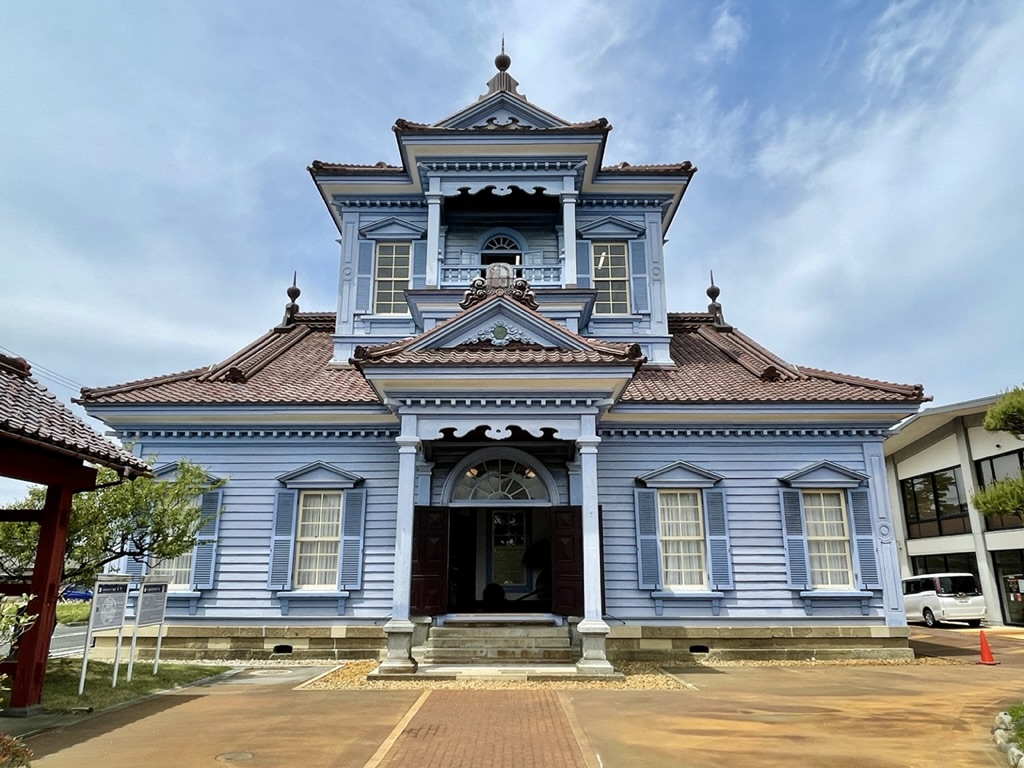
Around Tsuruoka Park in the center of Tsuruoka City, there are still buildings where you can feel the atmosphere of the Meiji and Taisho eras.
2022 marks the 400th anniversary of the Sakai family entering Shonai, and the attention to the historical townscape is increasing.
We will introduce such retro attractions all at once!
1. Chido Museum
The first place I visited was the Chido Museum.
This land was once the residence of the Sakai family, the feudal lord of Shonai.
Currently, several buildings designated as important cultural properties have been relocated here.
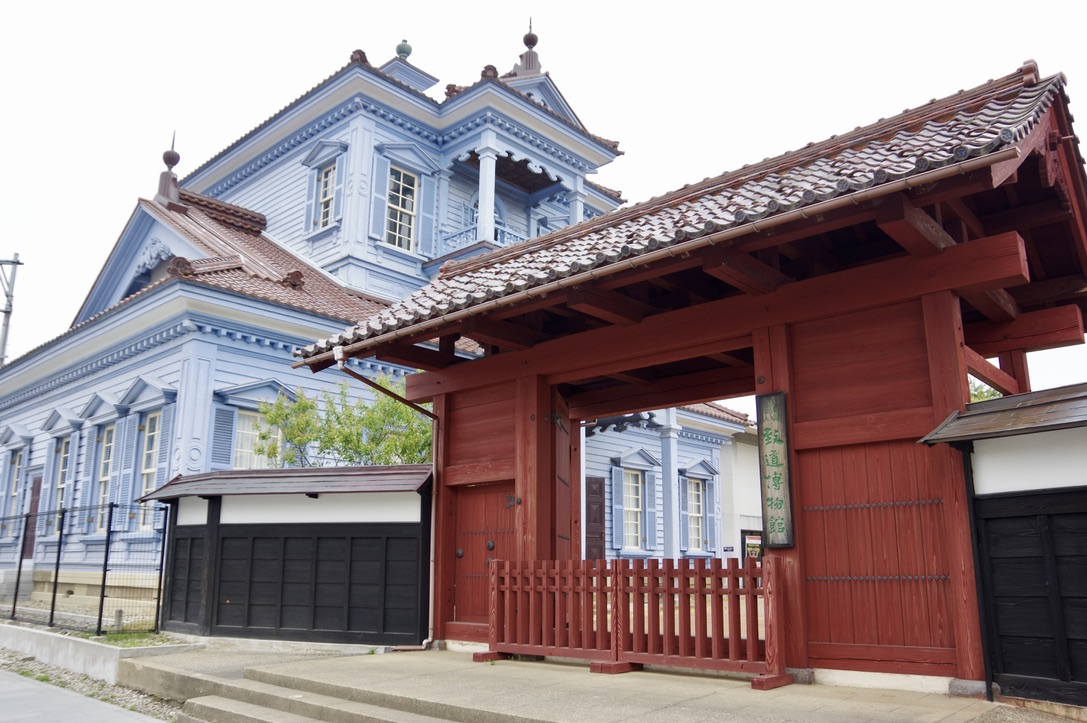
As soon as you arrive at the parking lot, there are signs and banners announcing the 400th anniversary.
The whole city has a lively atmosphere!
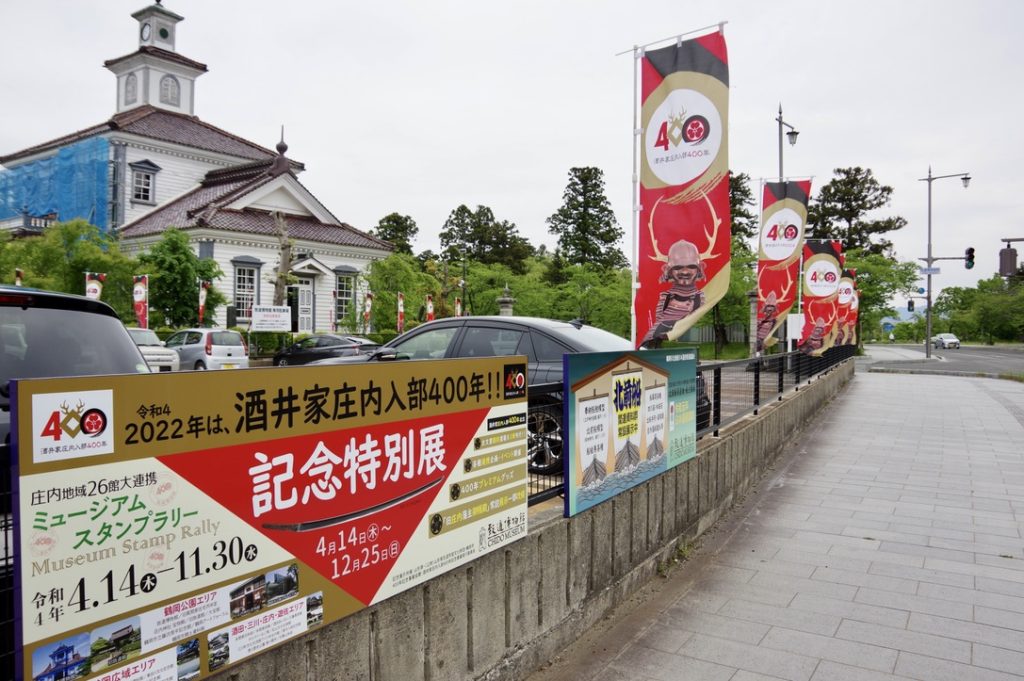
I will go to the reception first.
Already, I can already see buildings with an unfamiliar atmosphere, and I’m overwhelmed…!
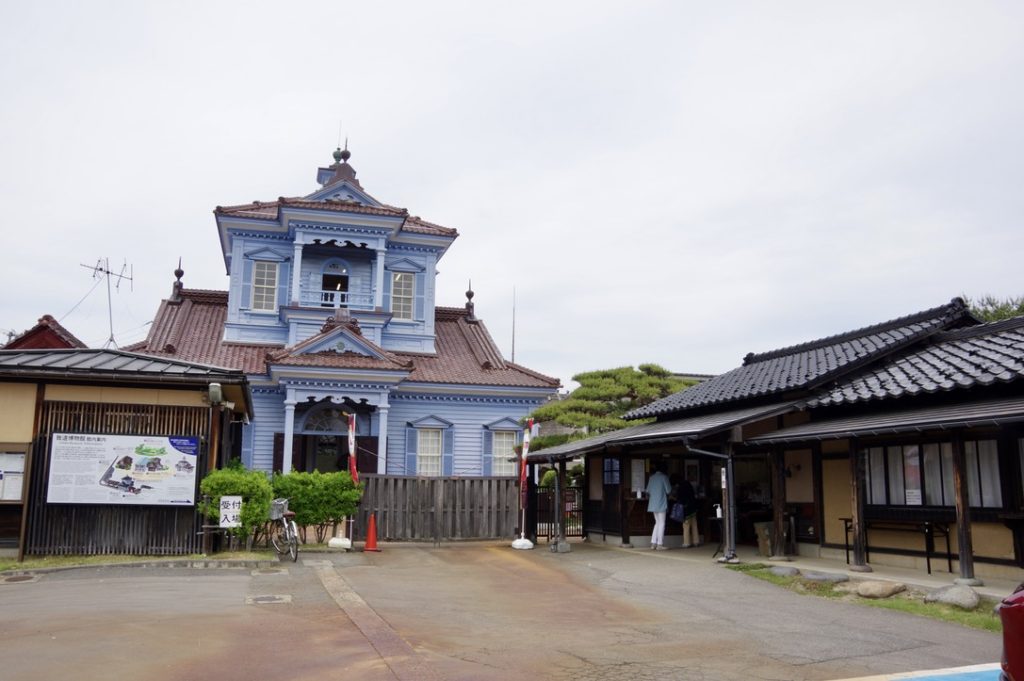
The layout of the hall is like this.
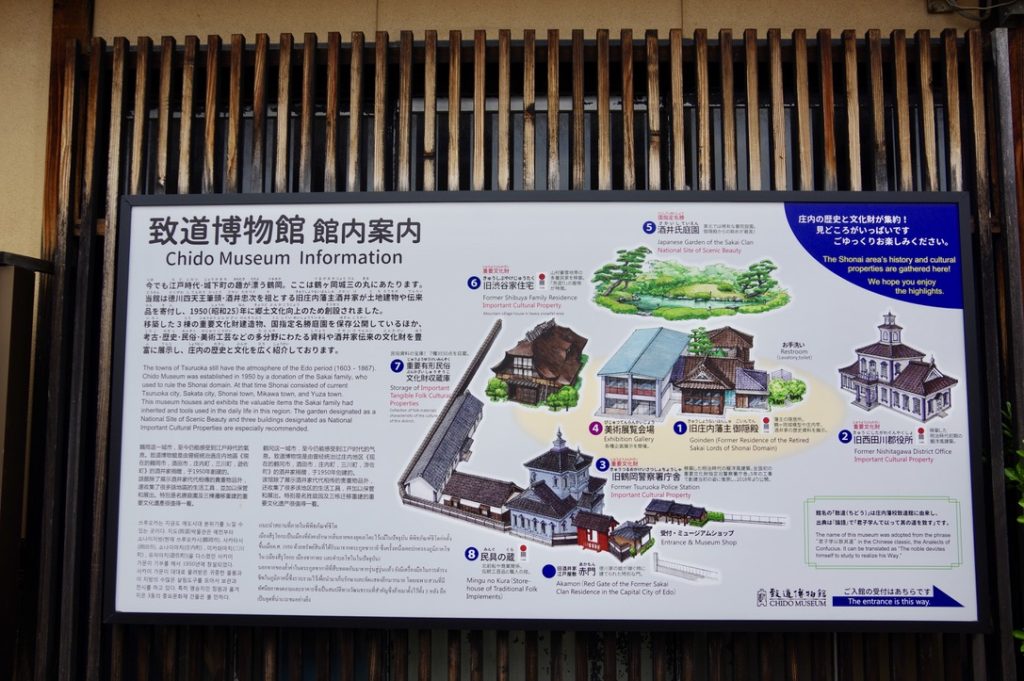
The buildings are not far from each other, so you can take your time and look around while walking.
After passing through the entrance reception, there is a shop where souvenirs are lined up.
There are many miscellaneous goods such as incense, and although it is compact, the product lineup that can be enjoyed by females is a great point!
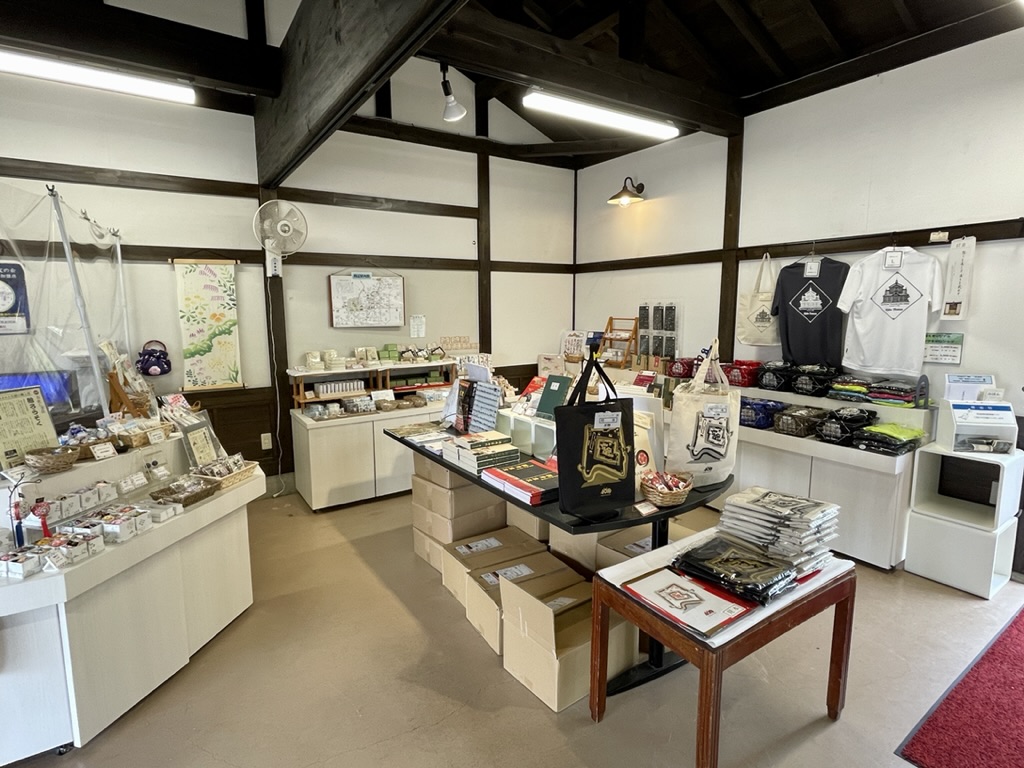
And finally enter!
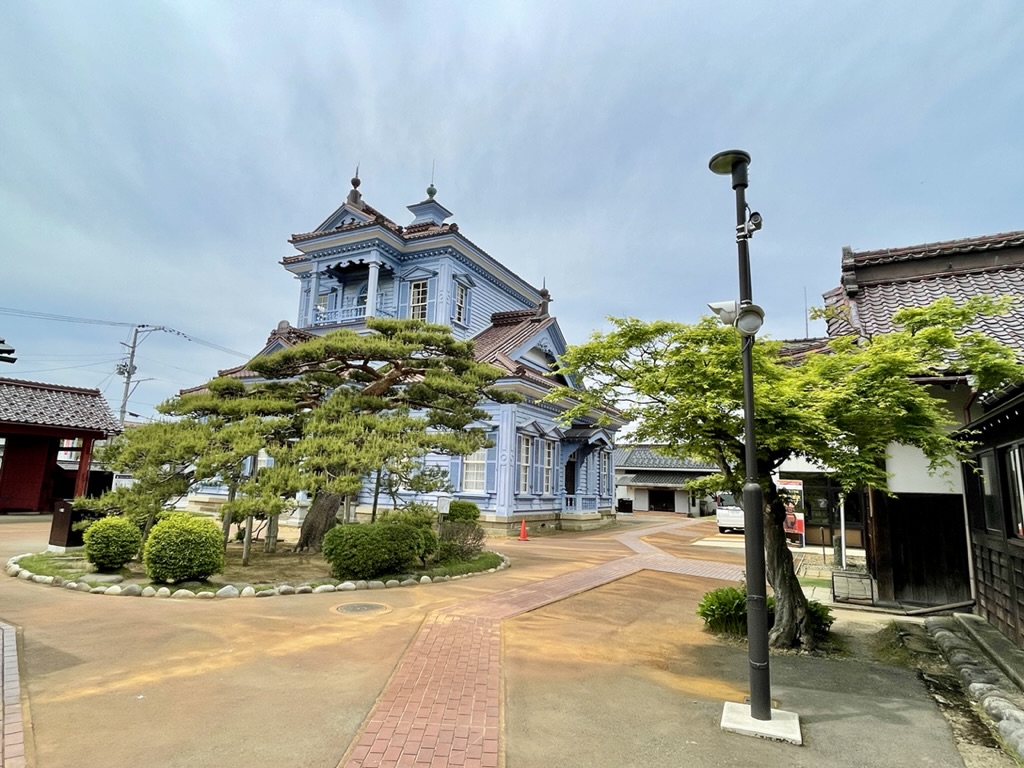
No matter which way you look around, there are splendid buildings lined up, and you will get lost where to look.
Now, let’s take a look at each of the facilities that we actually visited!
・Former Tsuruoka Police Station
The first thing I would like to introduce is the former Tsuruoka Police Station.

This building was conspicuous even before entering.
It is a nationally designated important cultural property, and it is said to be a police station built in the Meiji period.
Originally built in Babacho, it was relocated to its current location in 1956.
It is characterized by its bright light blue color, which has been restored to its original appearance.
Actually, it seems that the outer wall was white for a long time until the restoration work in 2017.
It is said that the original blue paint was discovered during restoration work, leading to the reproduction of this color.
When you enter the building, you will find that the wood used in the floors and other areas has been preserved as much as possible.
By the way, do you know what this room was used for?
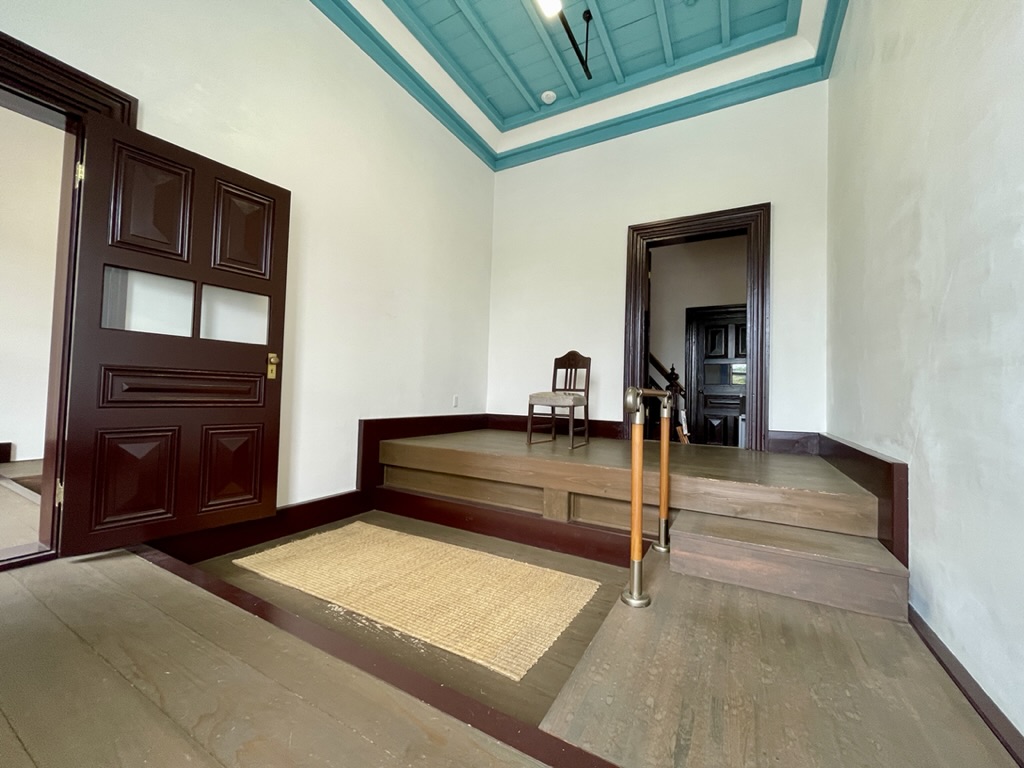
The correct answer was an interrogation room.
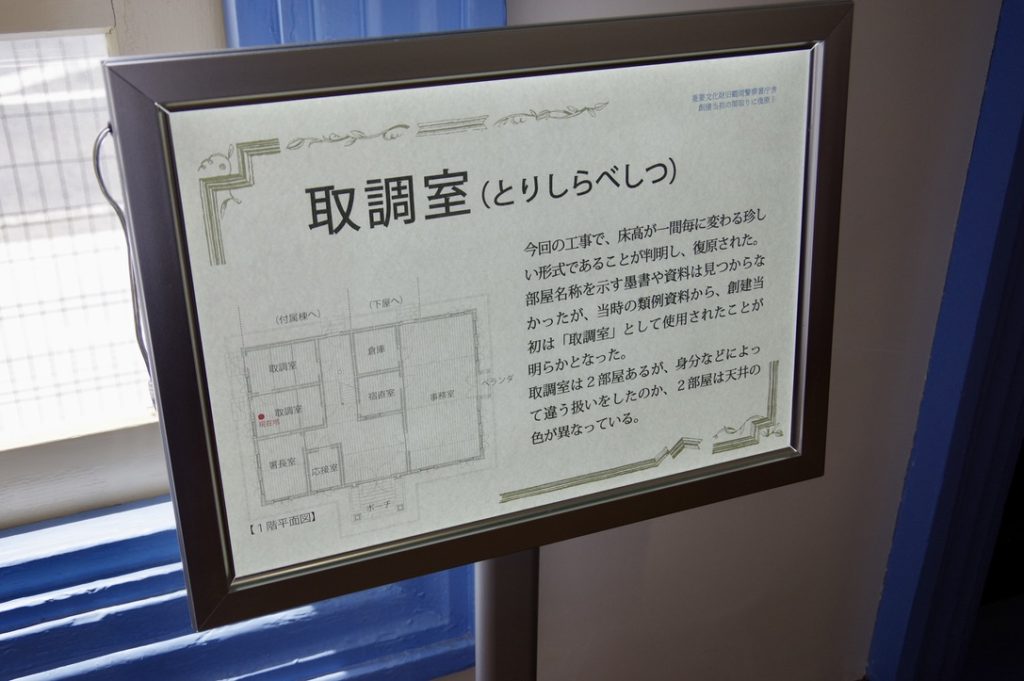
The sitting position of the person being interrogated is one step lower, which is said to be a rare construction.
Somehow, it feels like a remnant of the o-shirasu court that I saw in a historic drama tv series.
And when you climb to the second floor, you can see a nice view overlooking the entire site!
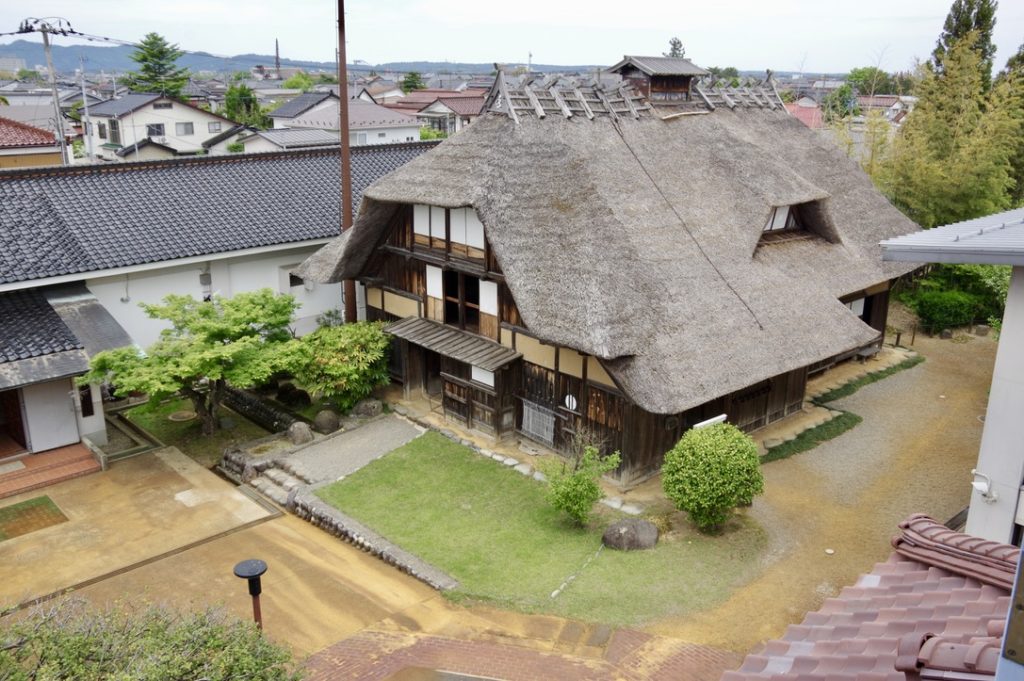
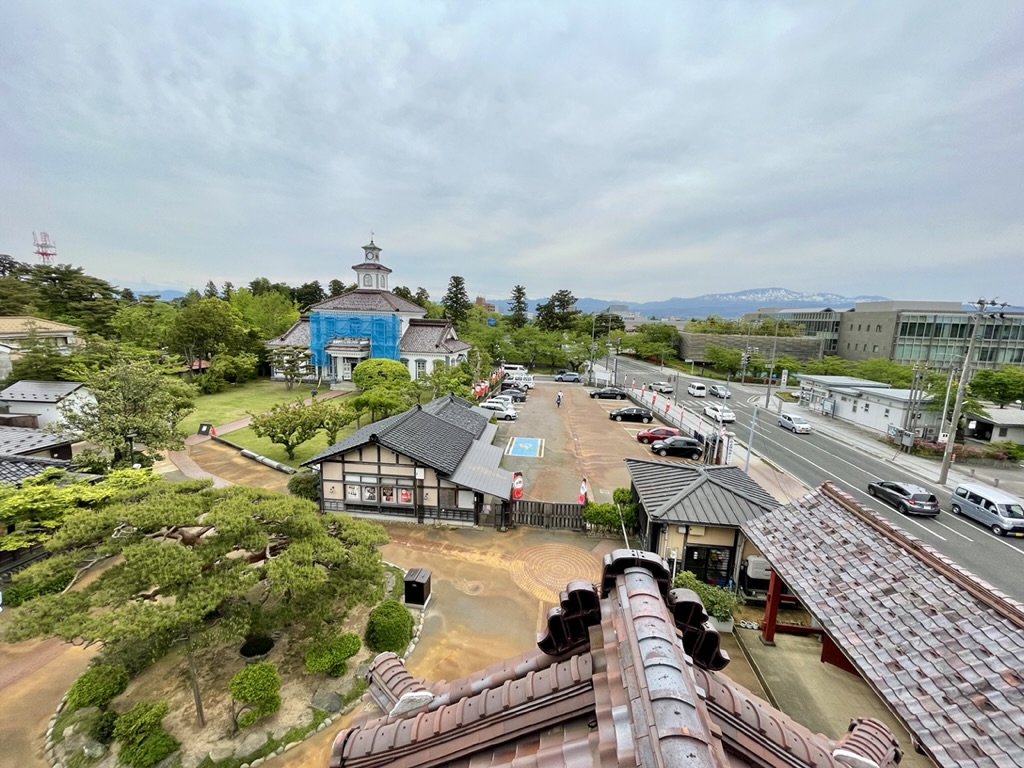
I will introduce it later, but the former Nishitagawa-gun government office that can be seen in the back was under restoration work.
・Storehouse of important tangible folk cultural properties & Storehouse of folk implements
Next are the Storehouse of important tangible folk cultural properties and the Storehouse of folk implements
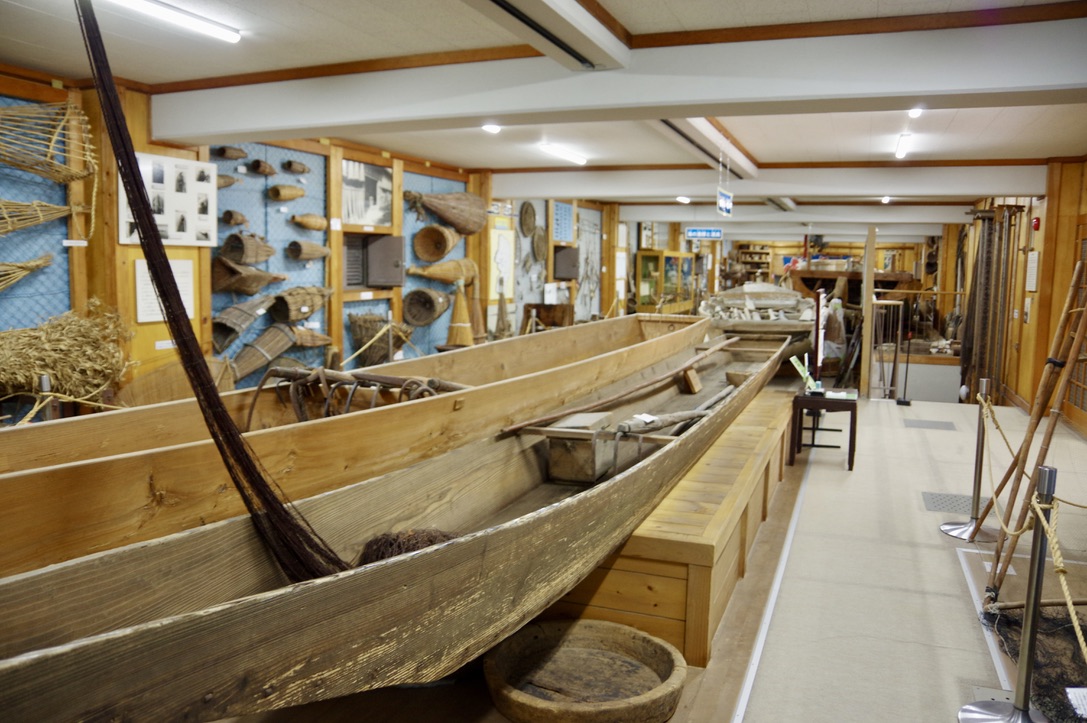
As the name suggests, they are lined with valuable items that represent the lifestyle and culture of the time.
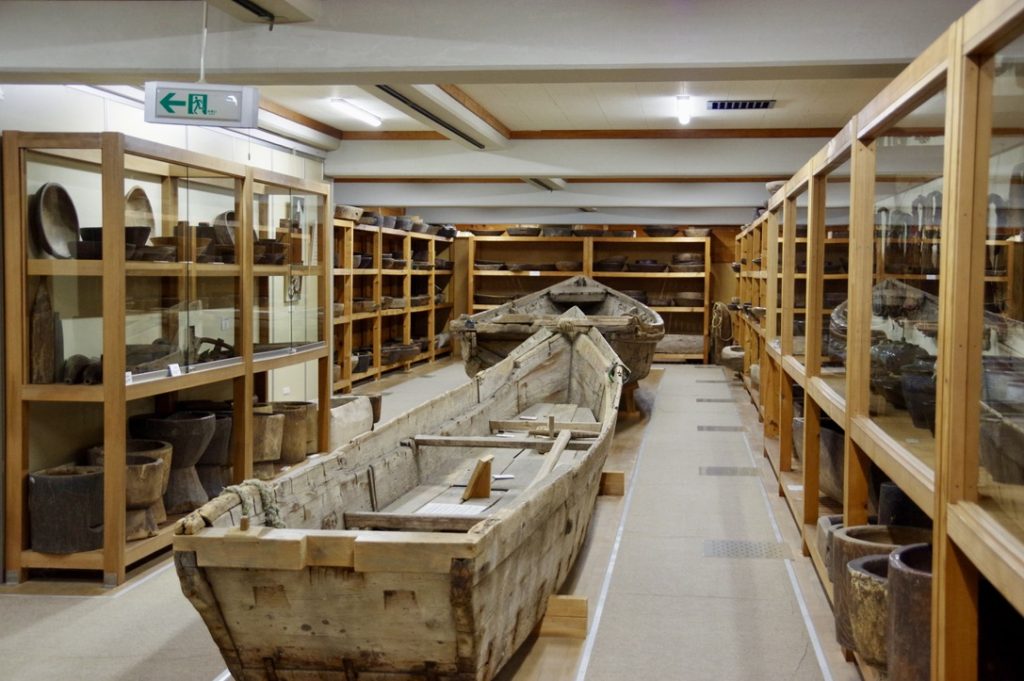
This is a back cushion called “bandori”, which is used when carrying heavy luggage.
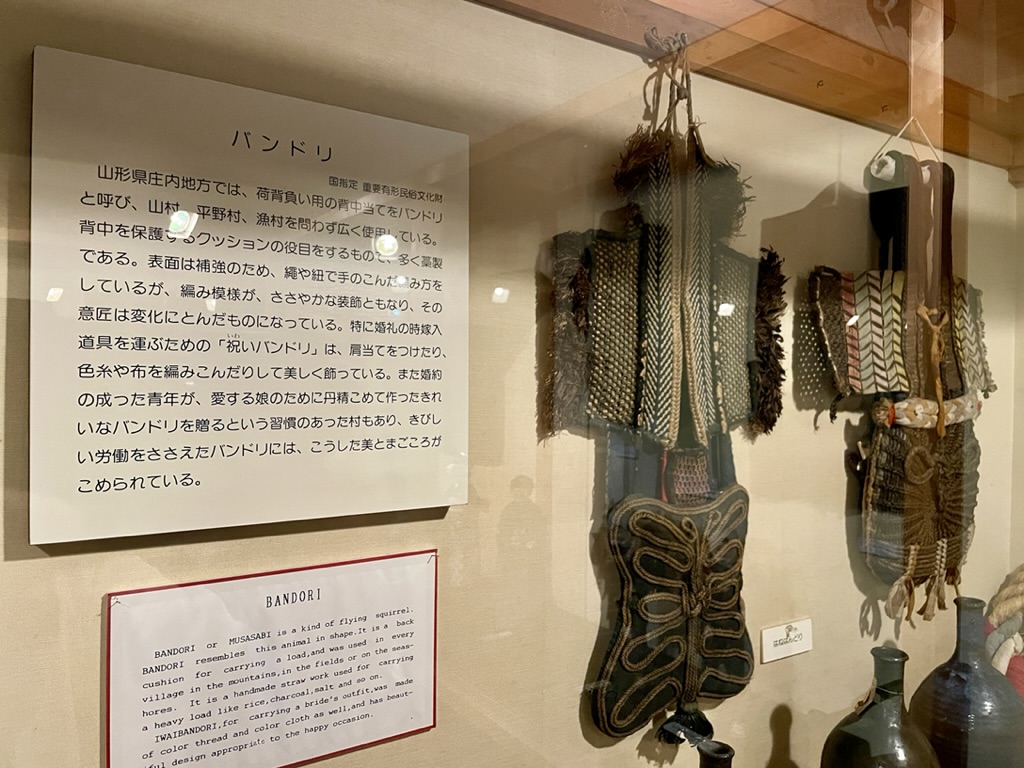
It is said that the decorated bandoori is unique to the culture of Shonai.
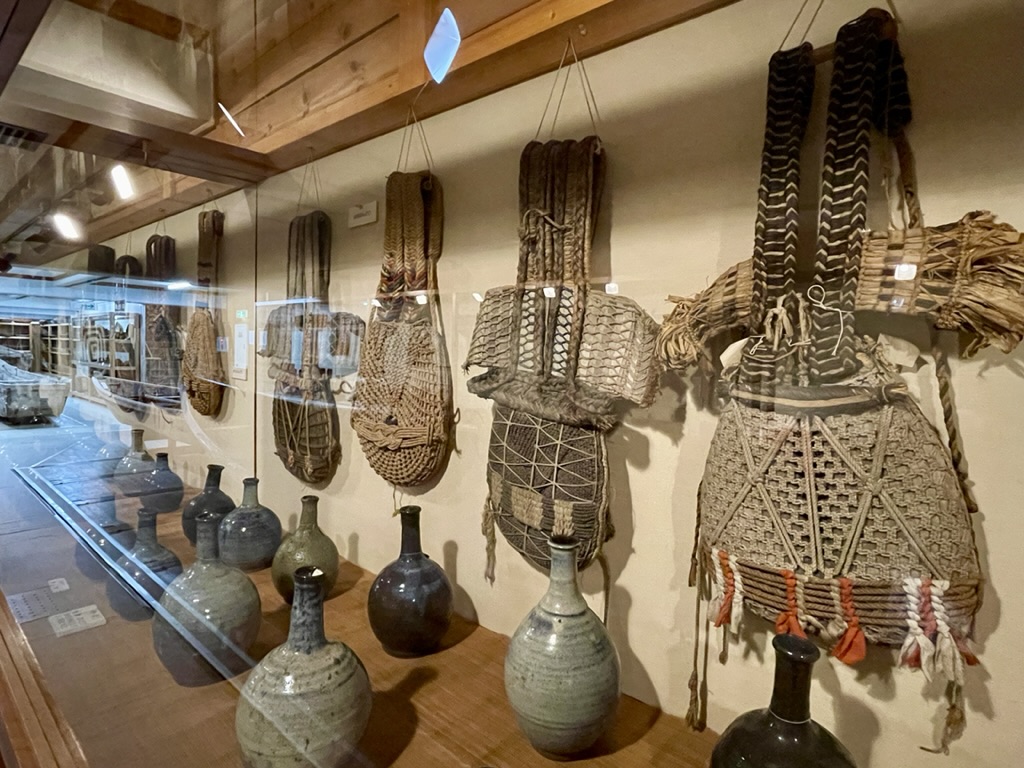
There are 5,350 important tangible folk cultural properties in the Chido Museum, including this storehouse!
It’s amazing how many valuable items there are.
・Former Shonai feudal lord's residence & Sakai garden
This is the former Shonai feudal lord’s residence.
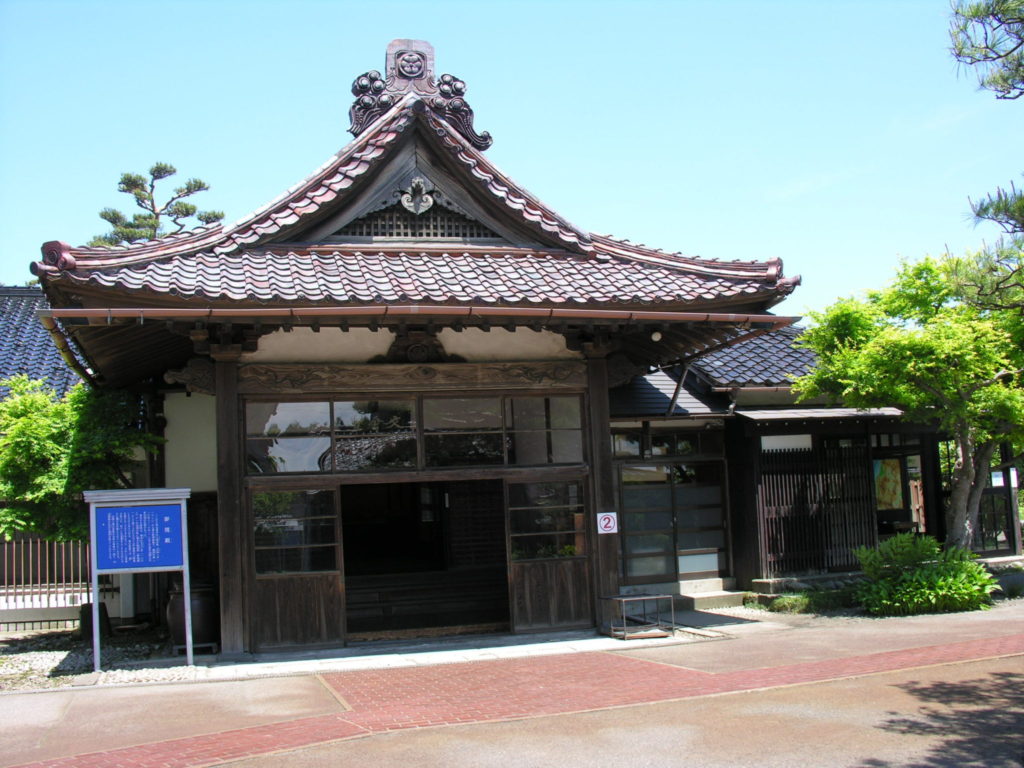
Image courtesy of Chido Museum
This is a building that was actually used as a retreat for the feudal lord.
At that time, it seems that there is a history that it was transported by ship from Edo and rebuilt here.
Inside the building, you can see exhibits about Tsurugaoka Castle and the Sakai family from the Edo period.
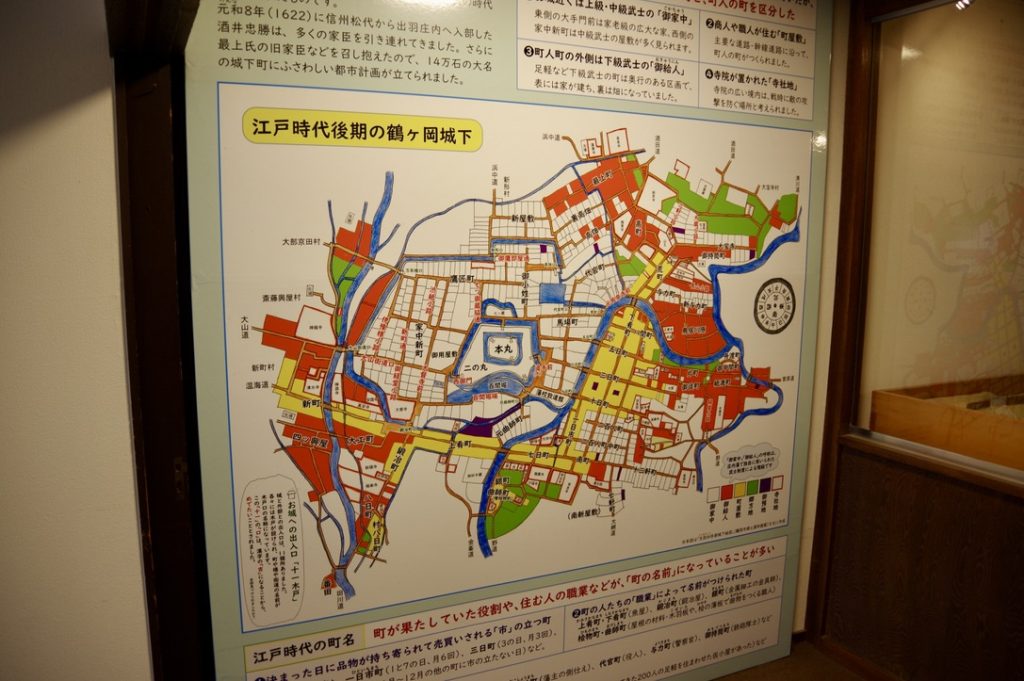
There were many exhibits related to surf fishing, which was popular in the Shonai domain.
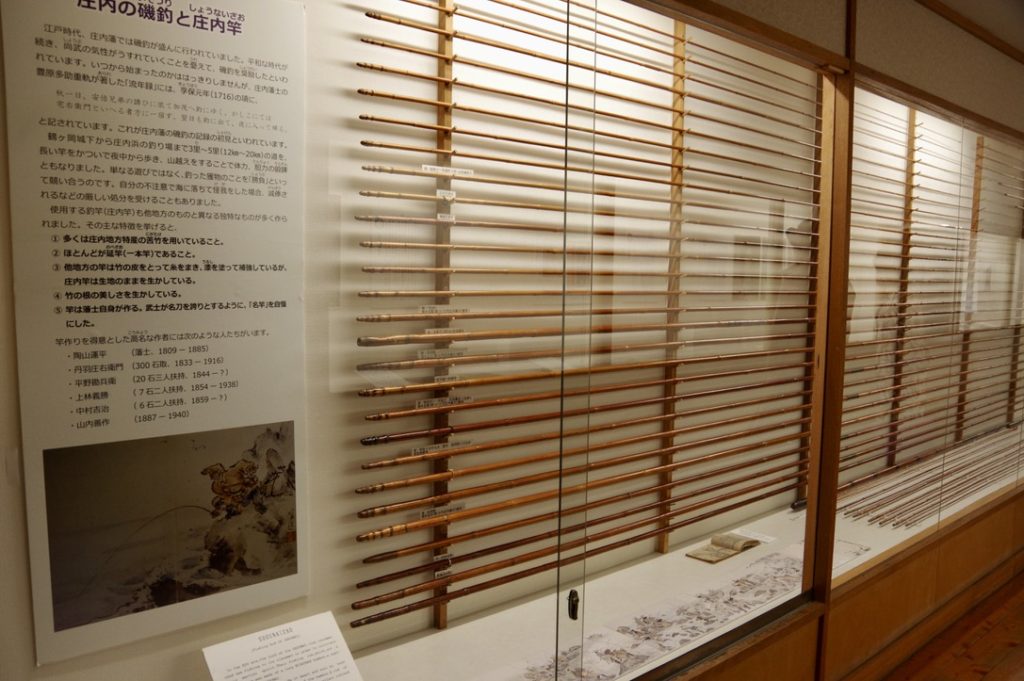
And what you can see at the back of the residence is the splendid Sakai Garden.
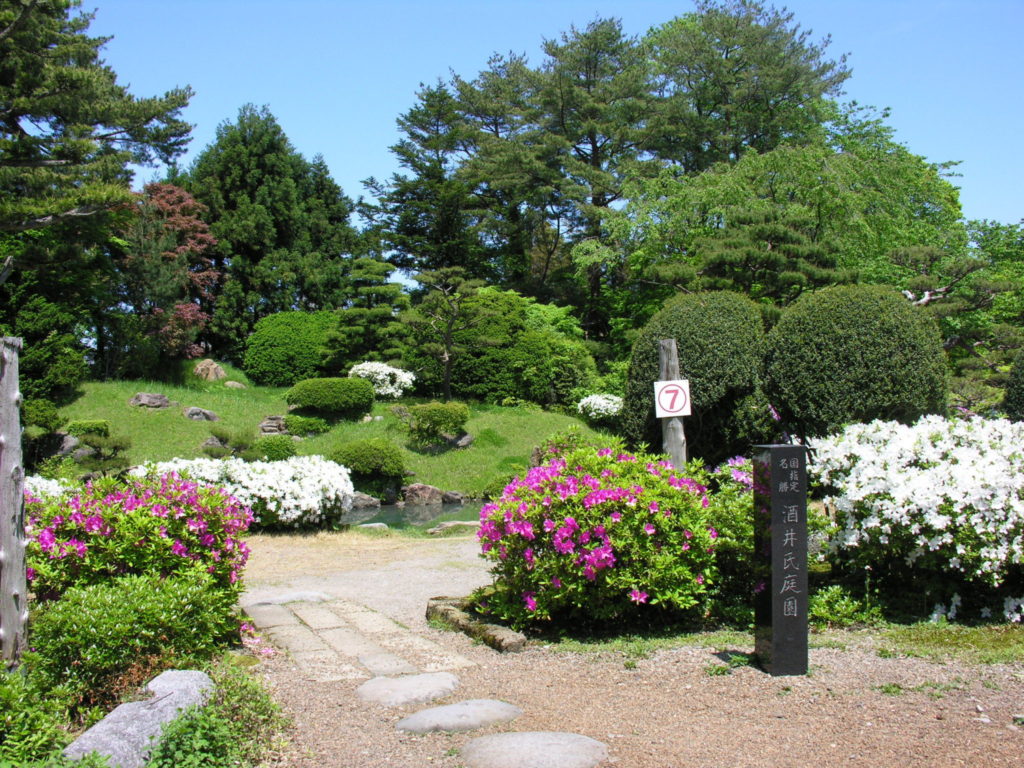
Image courtesy of Chido Museum
This is a nationally designated scenic spot, and the structure called Shoin Teien is rare even in the Tohoku region.
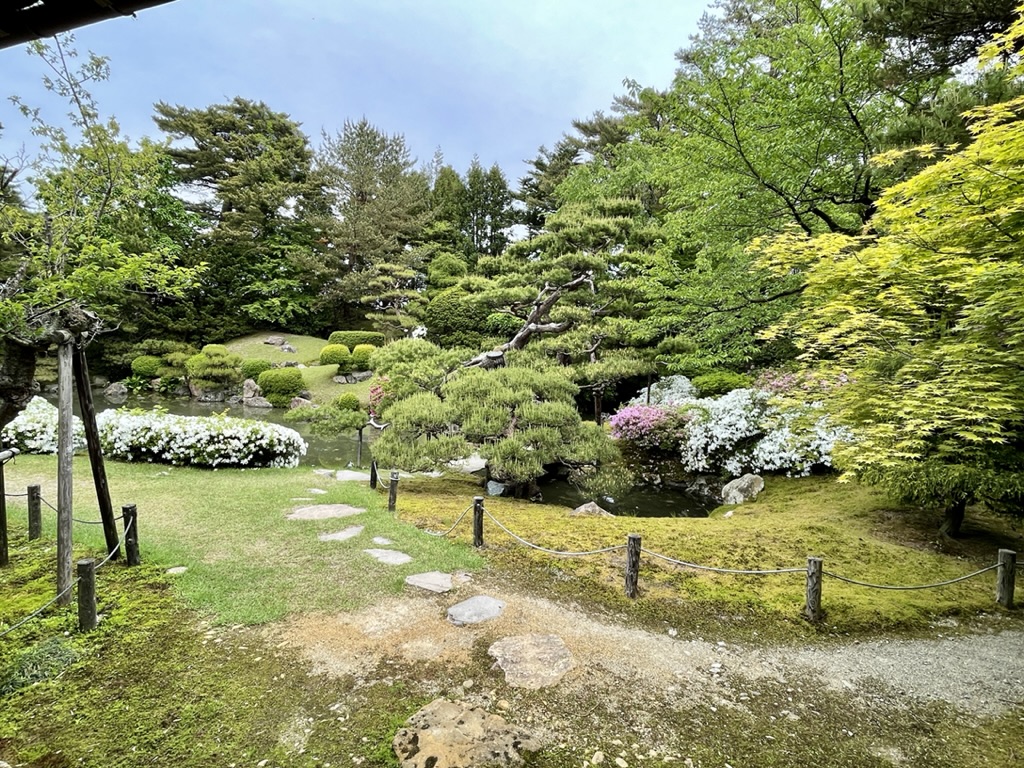
The garden seen from the residence is beautiful and has an extraordinary feeling.
・Former Shibuya Residence
Next, we will introduce the former Shibuya family residence, which features a thatched roof.
This is a private house relocated from the Tamugimata district of Tsuruoka City (formerly in Asahi Village).
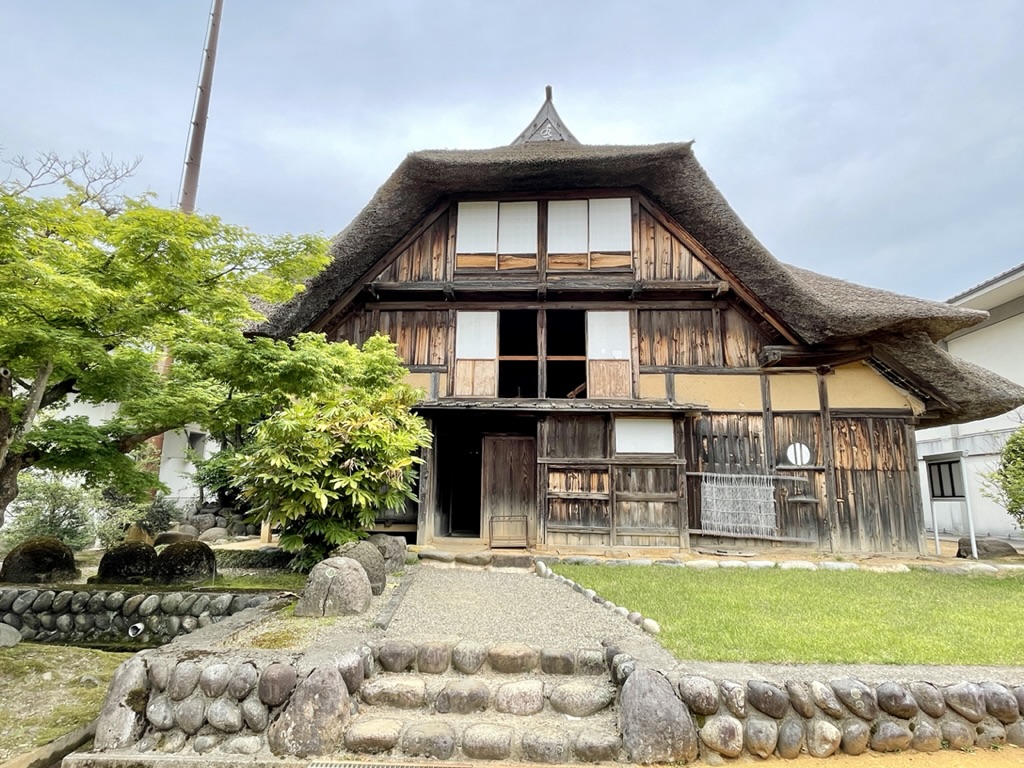
This roof, which looks like a helmet, was later rebuilt in response to changes in lifestyle.
Because sericulture became a livelihood after the Meiji era, high windows were installed in search of ventilation and good sunlight, and it seems that it became this shape.
The inside of the building is exactly what life was like in the past.
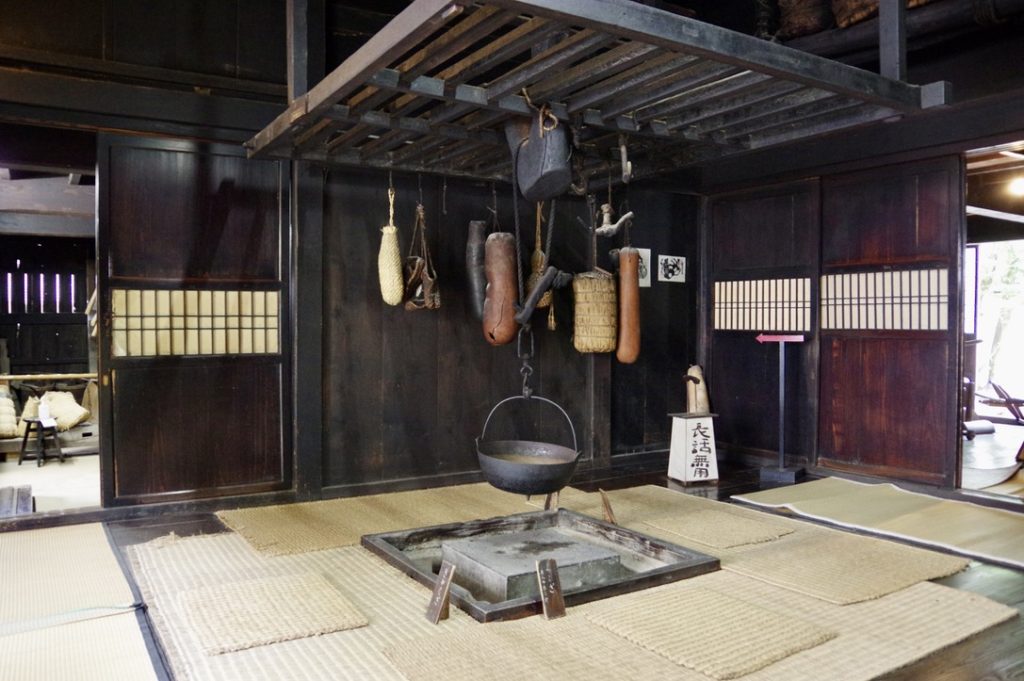
A loom that was actually used at the time.
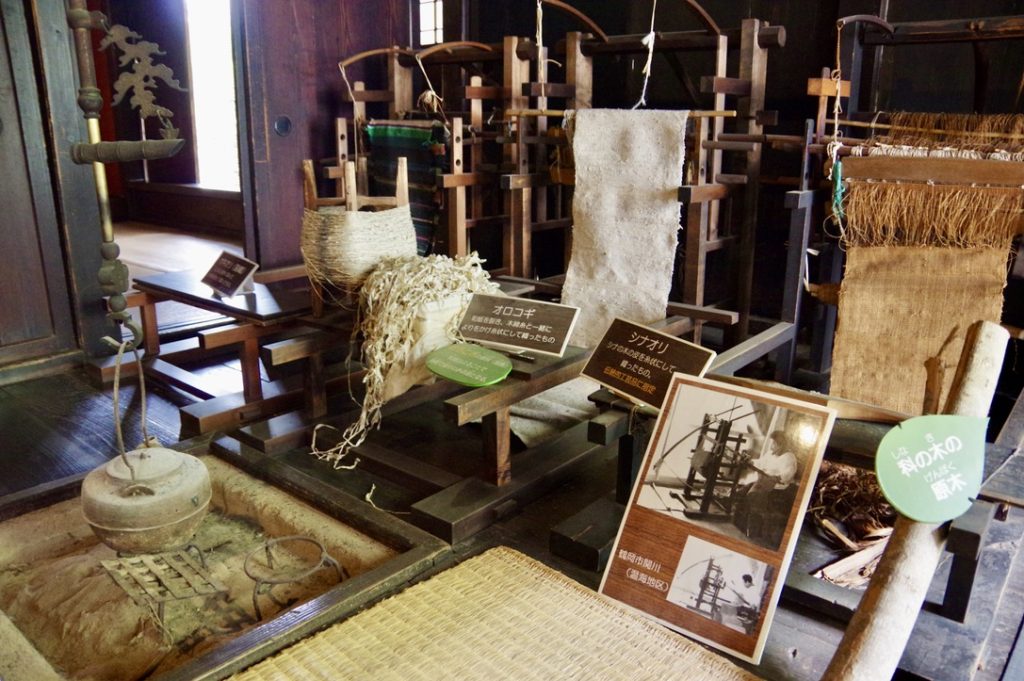
On the 2nd floor, tools used for cultivating rice are displayed.
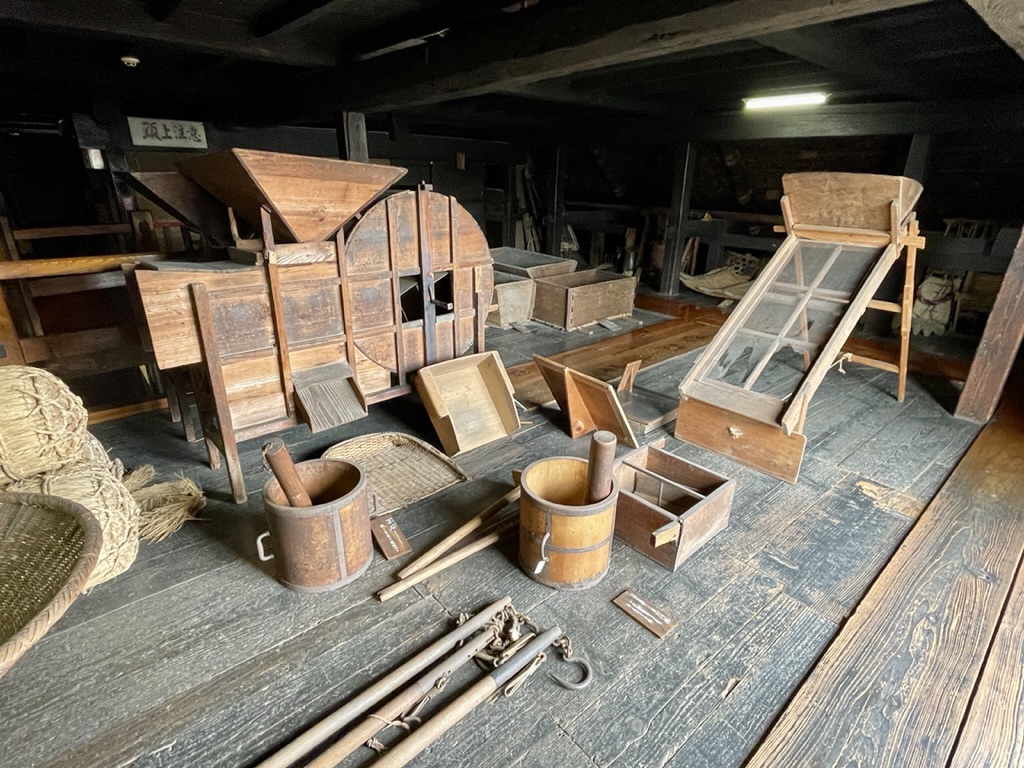
The atmosphere is as if you had slipped back in time to the Meiji era.
・Former Nishitagawa-gun government office
The last thing I would like to introduce is the Former Nishitagawa County Office.
It was completed in Baba-cho in 1879, and was relocated and restored to its current location in 1970~1972.
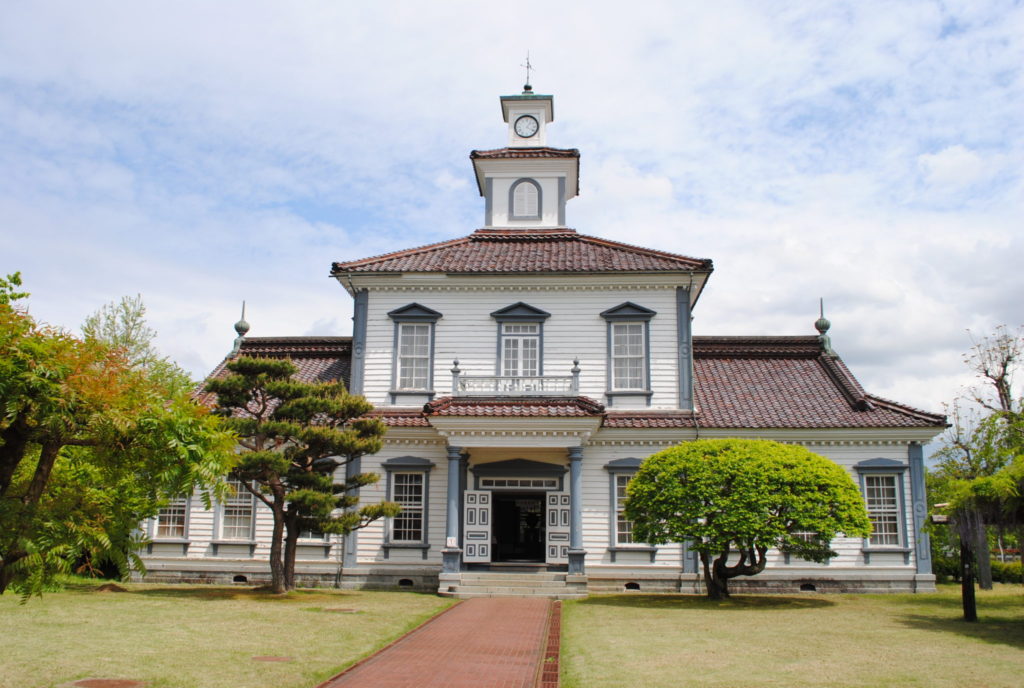
Image courtesy of Chido Museum
At the time of this interview in June 2022, scaffolding was being set up during restoration work, so it was not possible to tour the inside of the building.
I’m looking forward to seeing it again after the repair work is completed!
Detailed information

-
Chido Museum
10-18 Ienakashinmachi, Tsuruoka City
0235-22-11990235-22-1199
2. Tsuruoka Catholic Church
Next, we visited Tsuruoka Catholic Church.
It is about 9 minutes on foot from the Chido Museum.
If you walk around the moat of Tsuruoka Park, which is full of greenery, you will see a beautiful church.
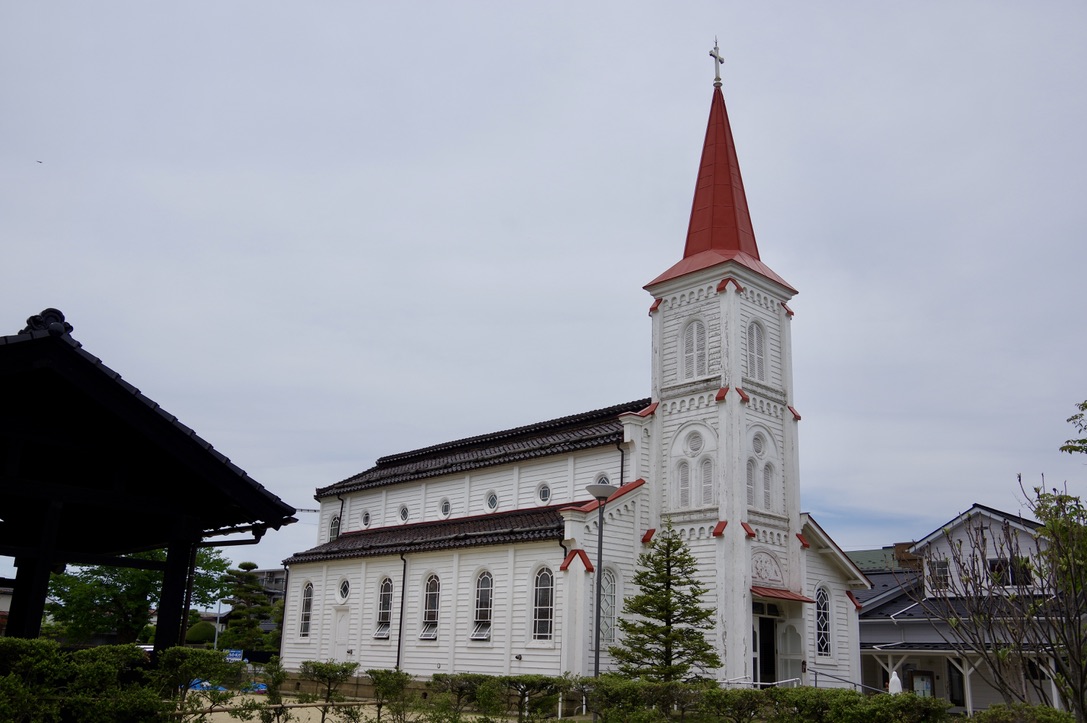
There is a fine gate at the entrance, and there is a kindergarten on the premises.
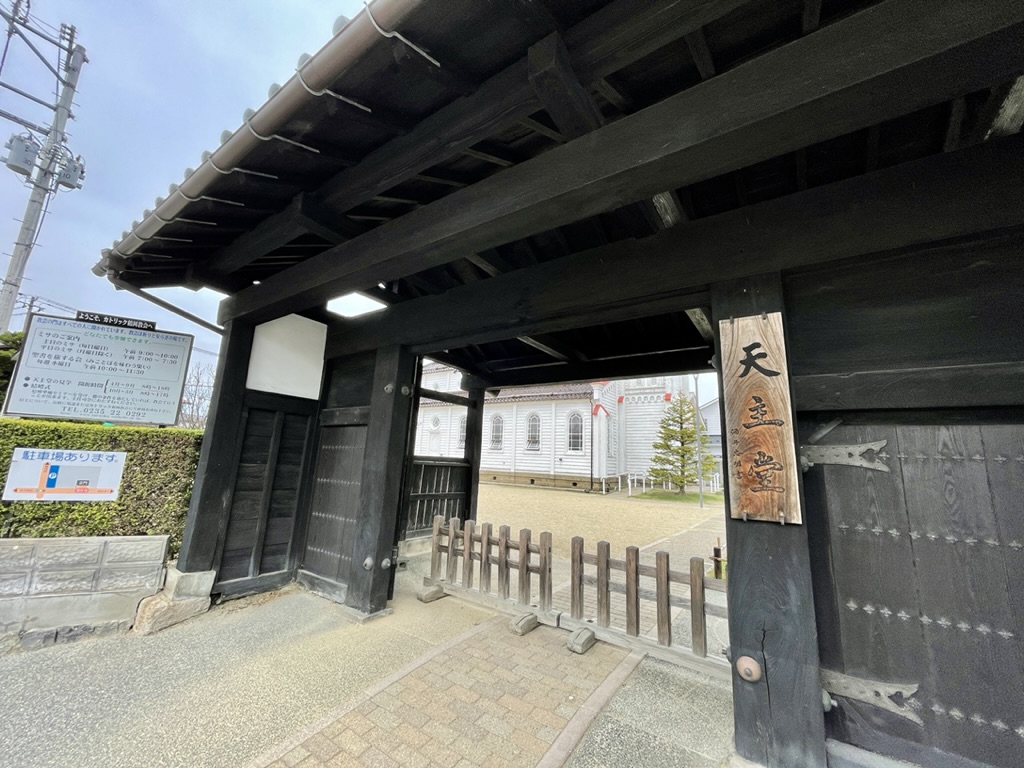
Being a church, in principle it is open to everyone.
If you want to visit the inside freely, make sure that it does not overlap with the mass time indicated on the signboard.
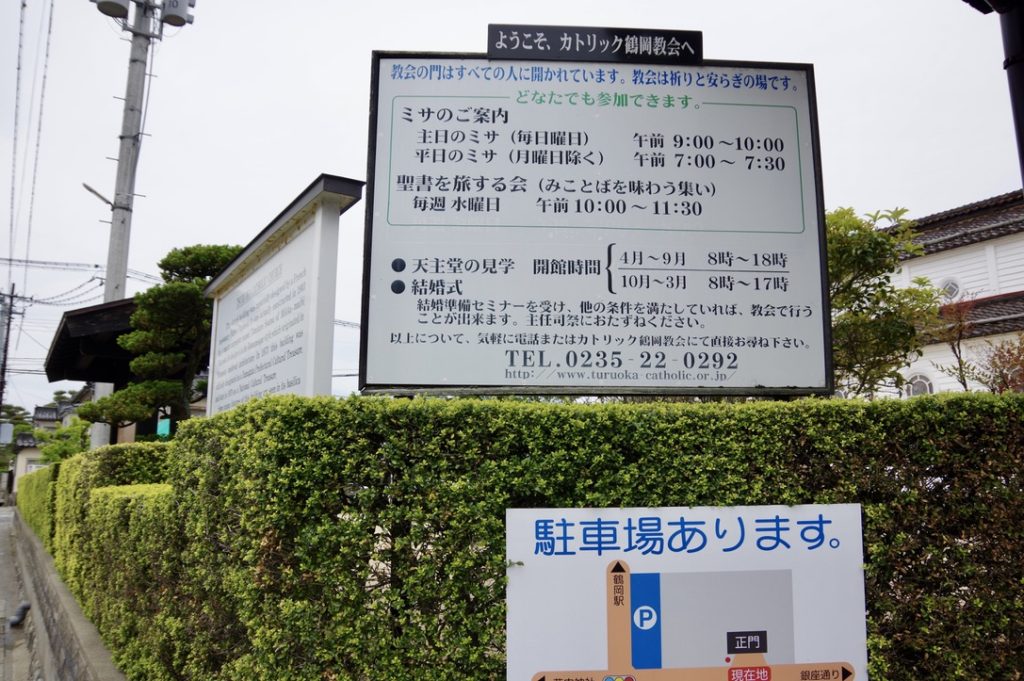
This is the front.
It is said to be built in the oldest implemented Western style in the Tohoku region.
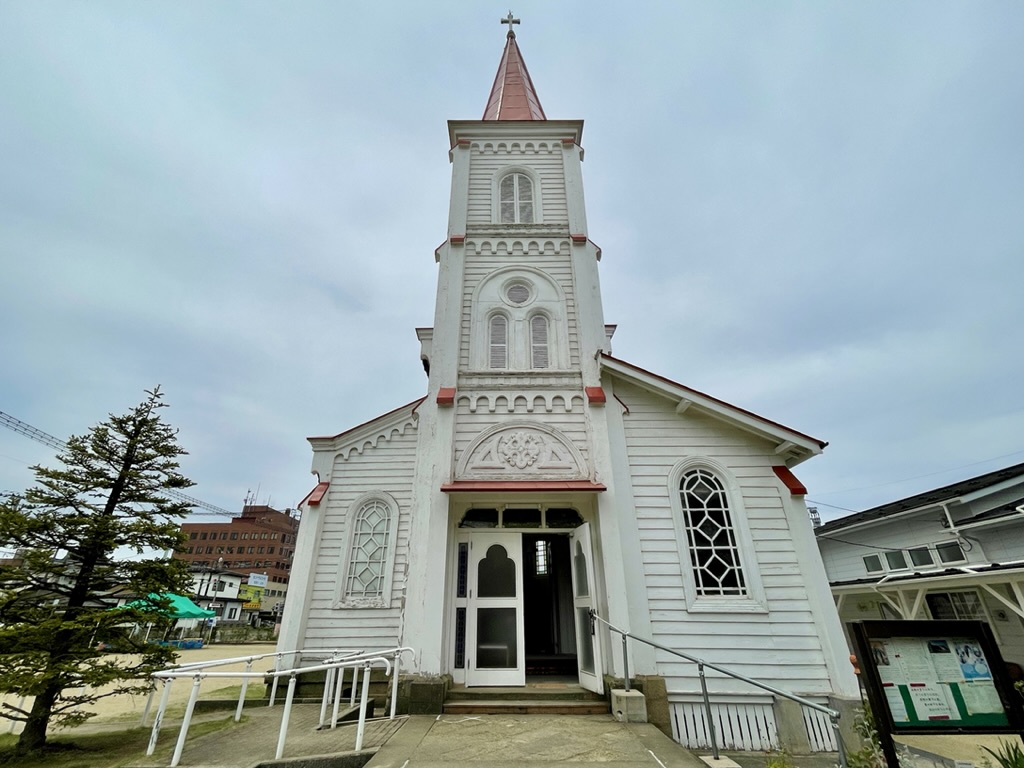
And when you step inside, the interior of the cathedral has a high ceiling and a solemn atmosphere.
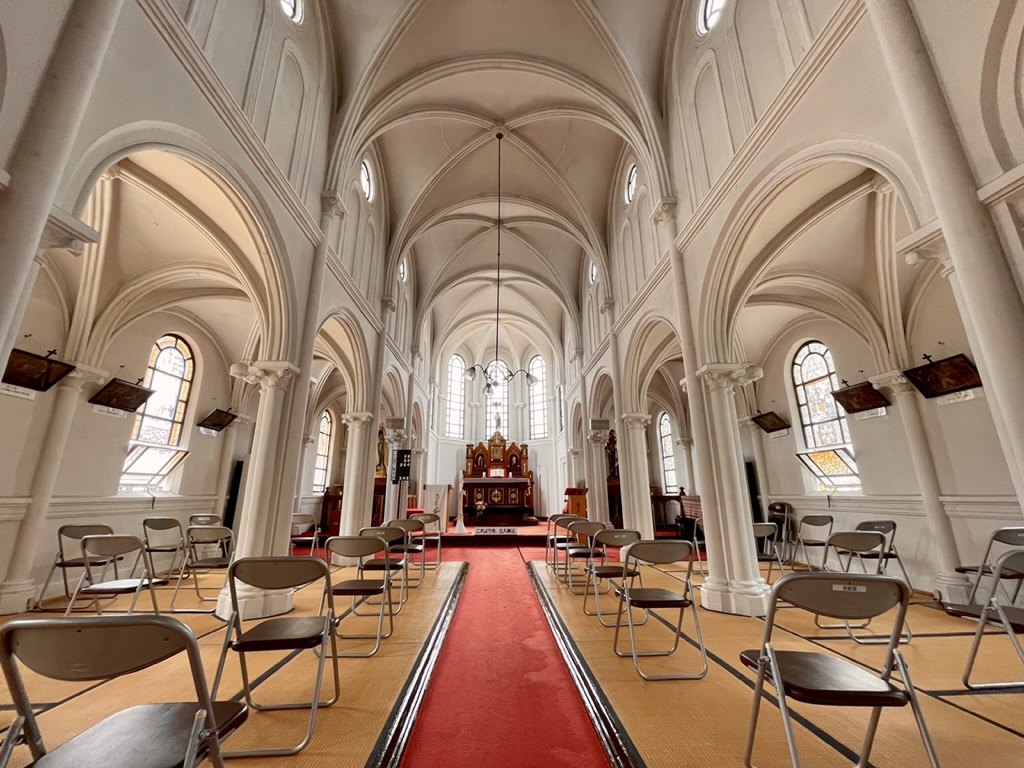
The central altar houses a statue of Jesus Christ.
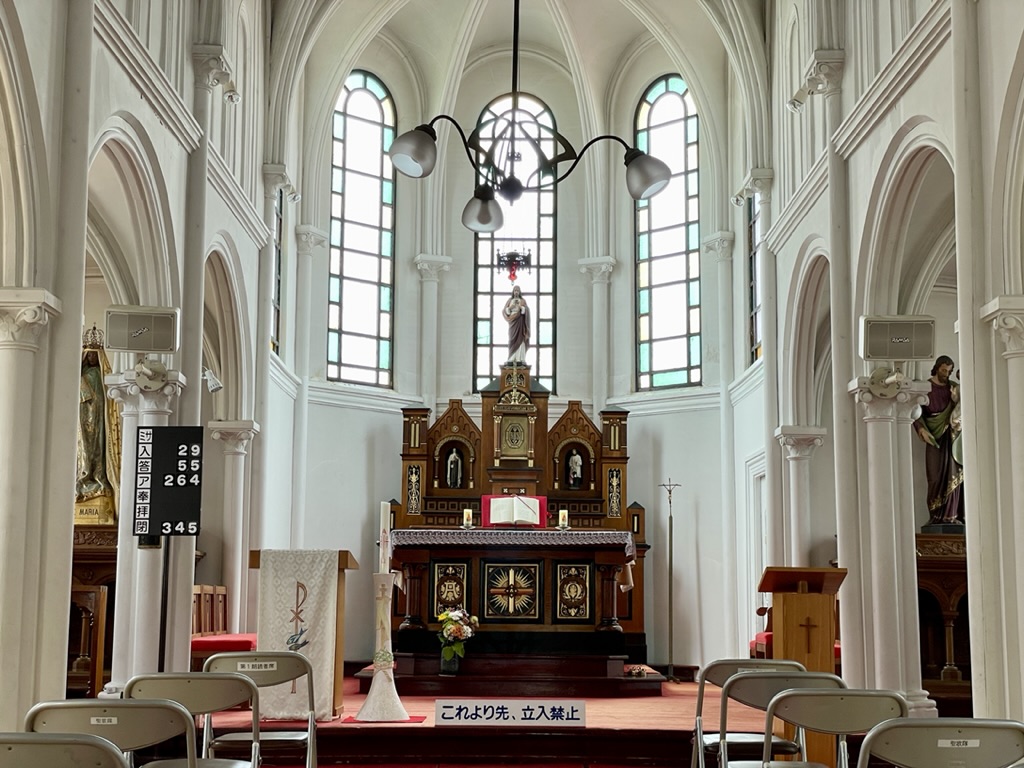
This Black Virgin Mary Statue is rare in the world and is the only one displayed in Japan.
It was donated by a French monastery in 1903 when this church was completed.
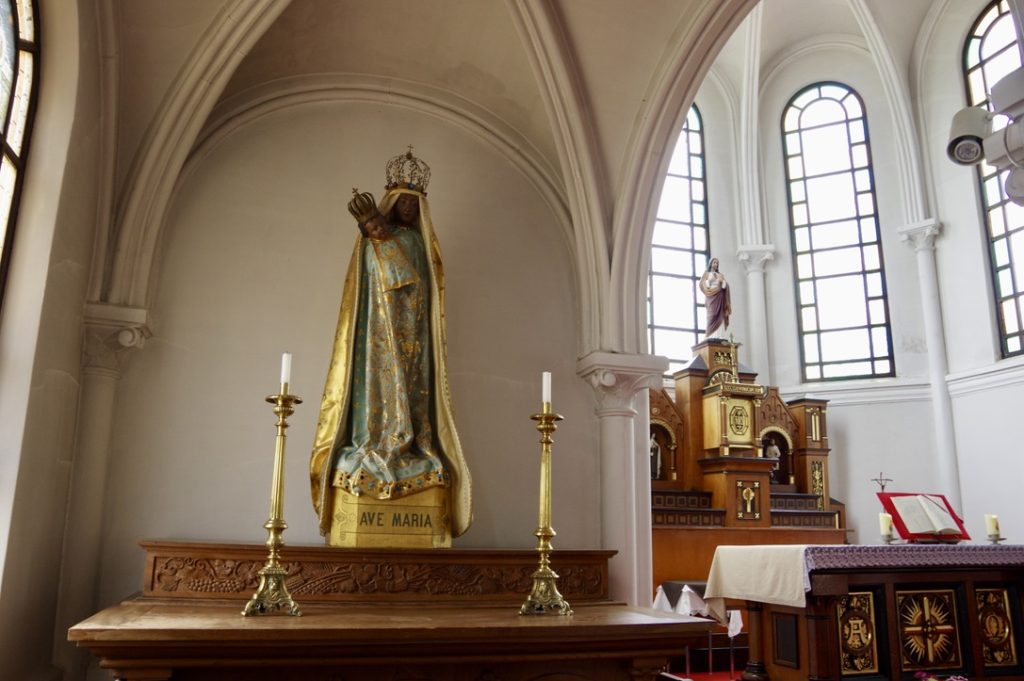
And what catches your eye is this beautiful window painting.
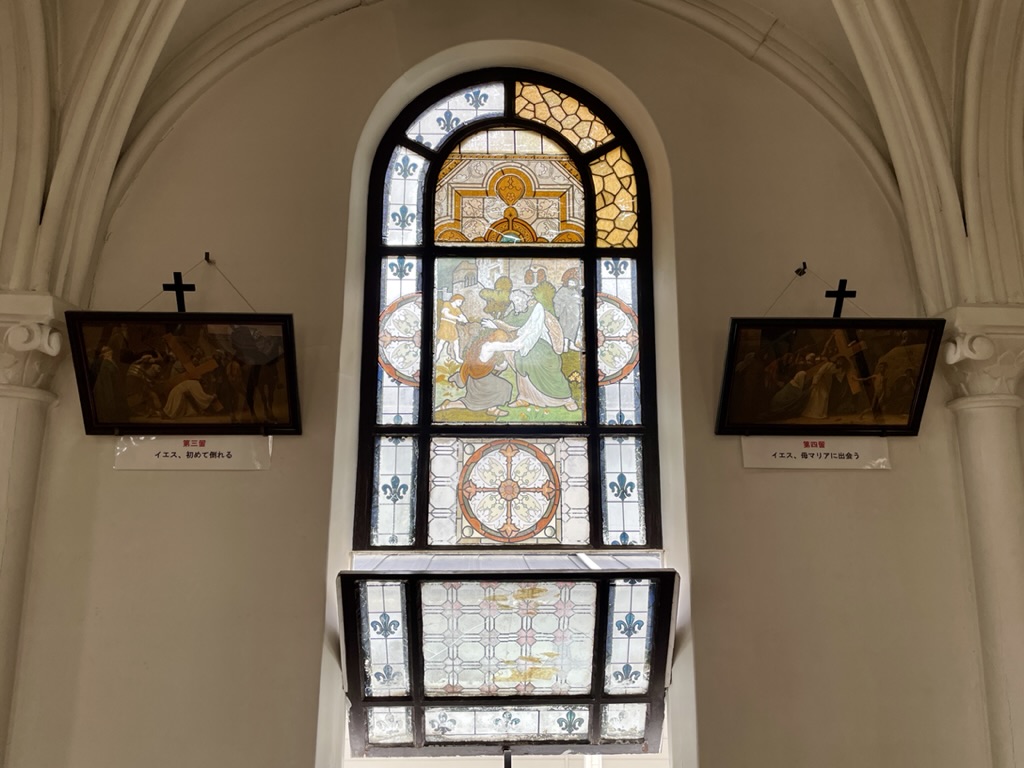
This is not a stained glass, but a transparent paper with a picture drawn sandwiched between two pieces of glass.
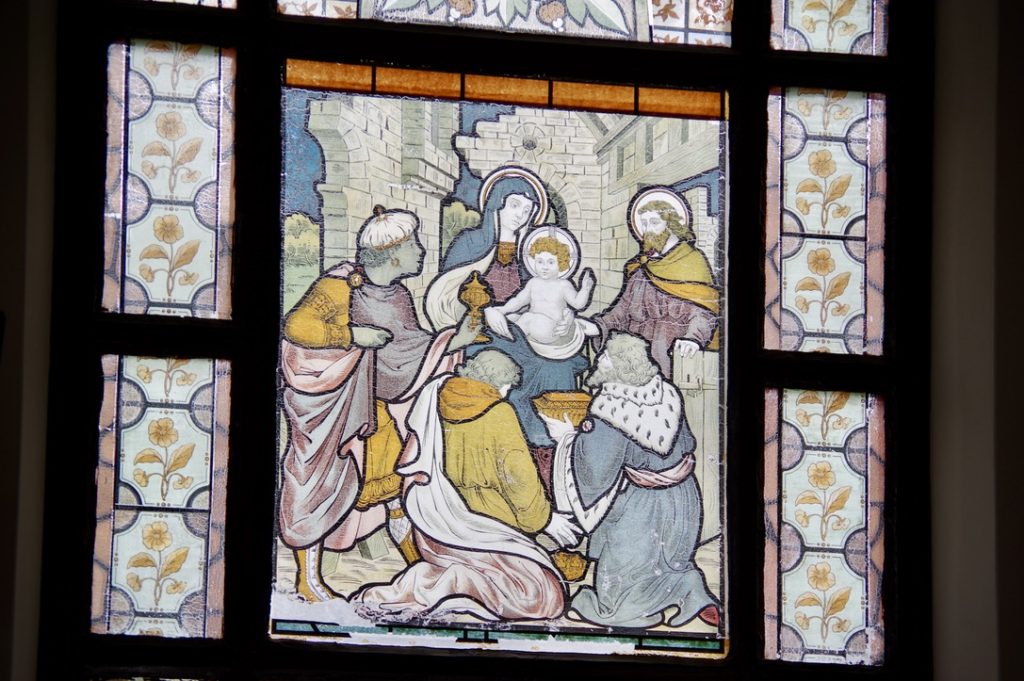
This is the only building in Japan where you can see such window paintings.
It’s worth a visit just for that alone.
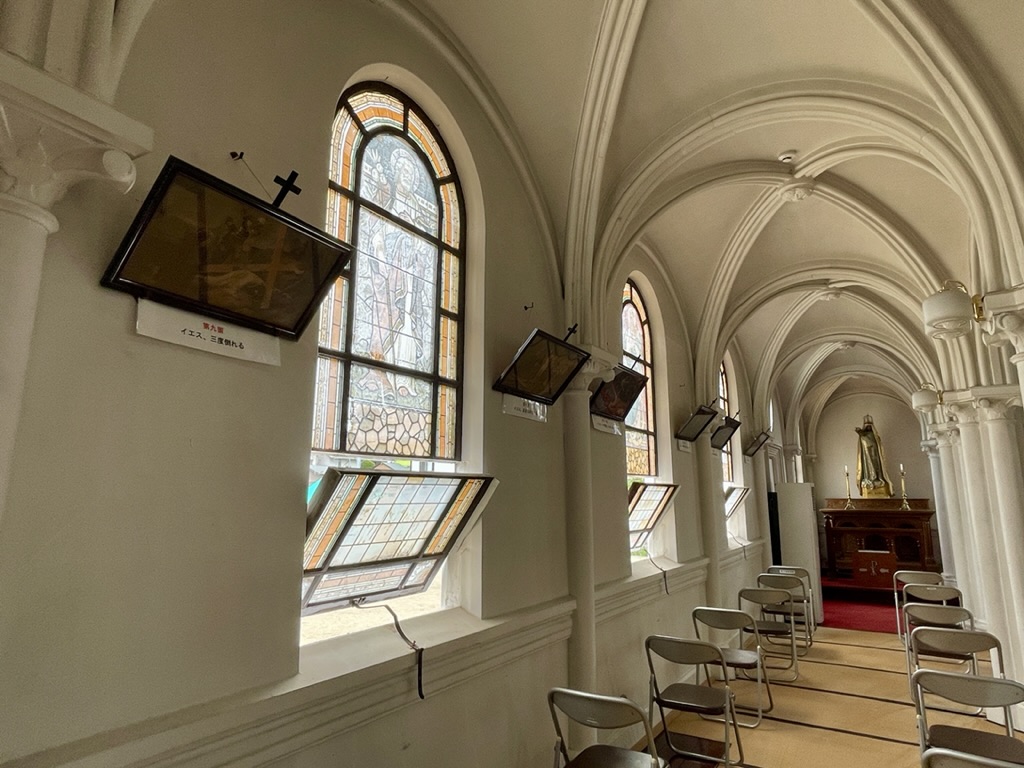
Window paintings with different patterns are lined up on the walls on both sides.
By all means, I would like you to visit this rare work in person to see it!
Detailed information

-
Tsuruoka Catholic Church
7-19 Babacho, Tsuruoka City
0235-22-02920235-22-0292
3. Heishindo &
・Old Kazama family residence Heishindo
Next, I would like to introduce the former Kazama family residence called “Heishindo,” which is a Nationally designated important cultural property.
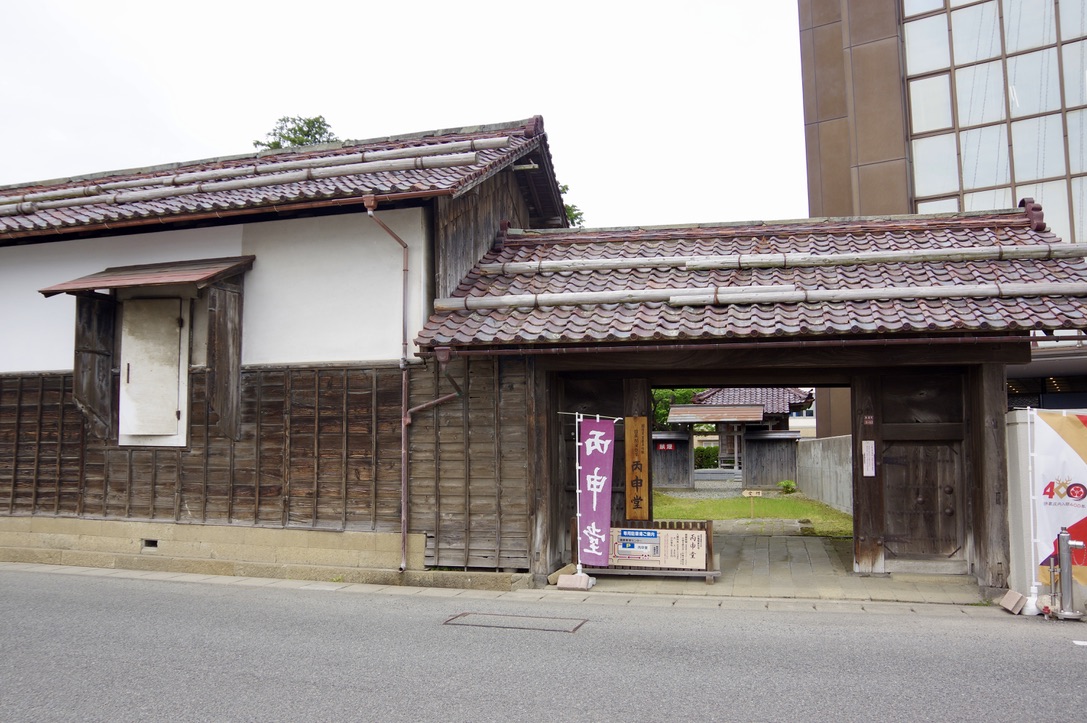
It is close to the Tsuruoka Catholic Church, and you can see this gate in about 2 minutes on foot.
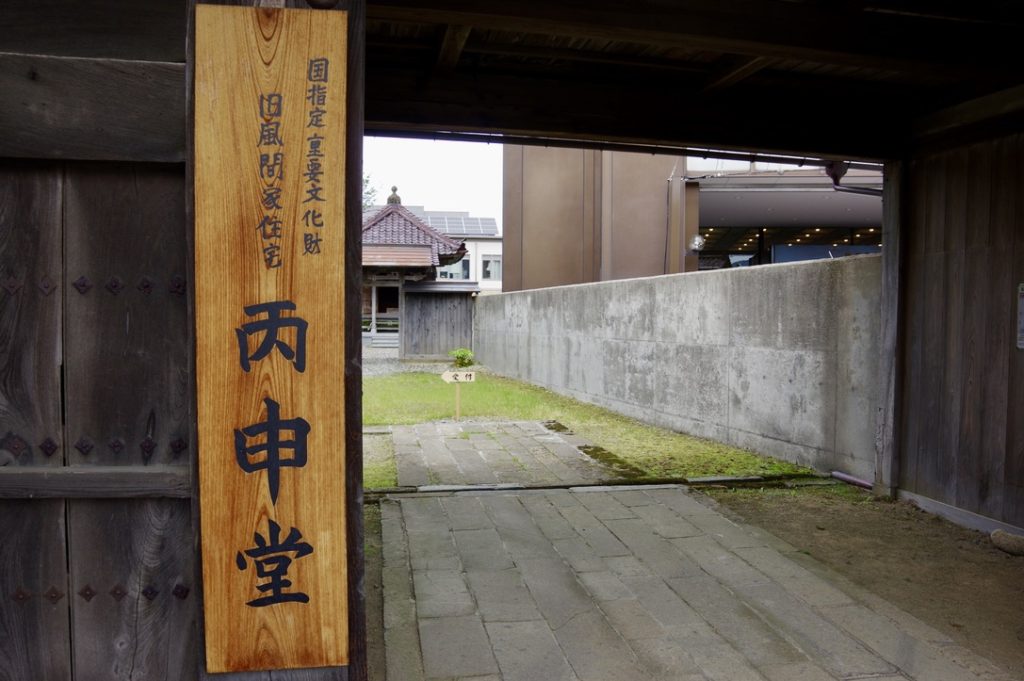
The Kazama’s was a wealthy merchant family which ran a kimono shop as a purveyor of the Shonai clan during the Edo period.
In the Meiji era, they turned to the money lending business and focused on industrial development of Tsuruoka as landlords.
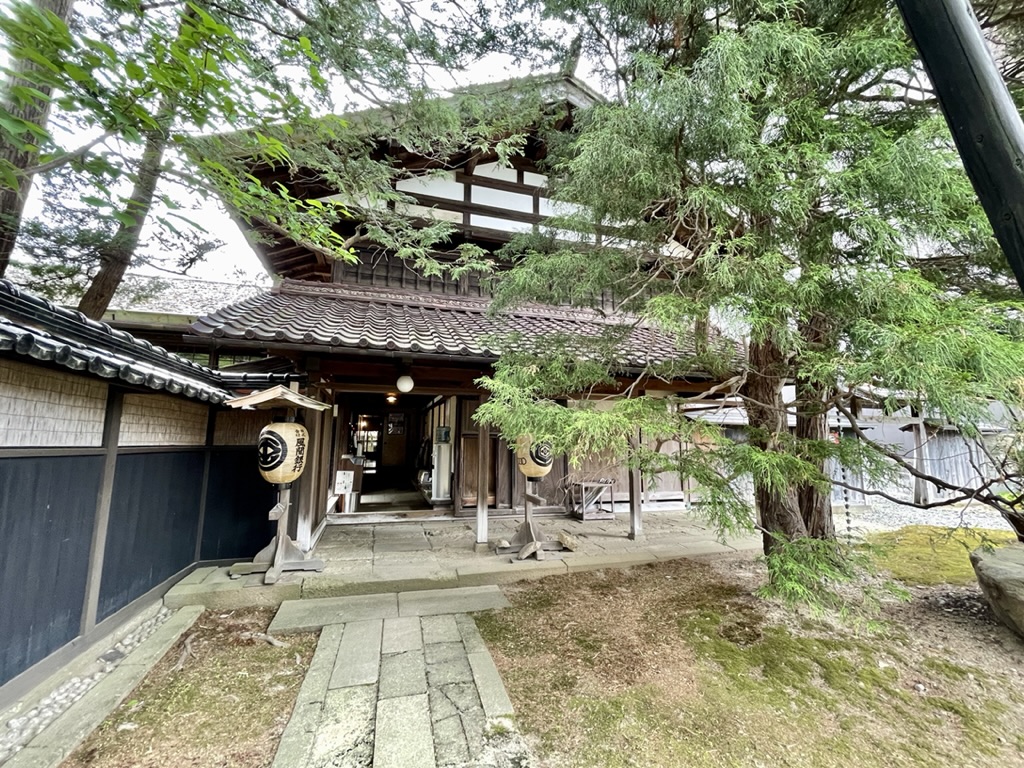
The feature of Heishin-do is this stone roof with cedar bark.
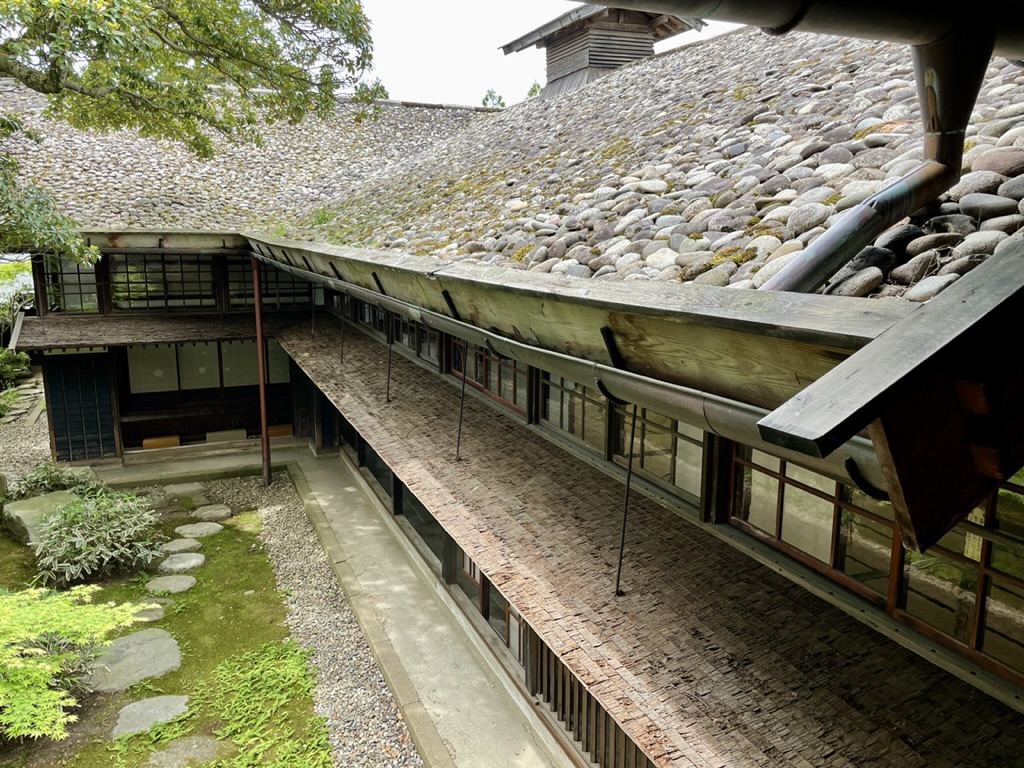
It is said that about 40,000 paved stones are used, and it is a spectacular sight that cannot be seen anywhere else.
Once every 20 years, the cedar bark is reroofed and the stones are cleaned.
It’s a lot of work just thinking about it.
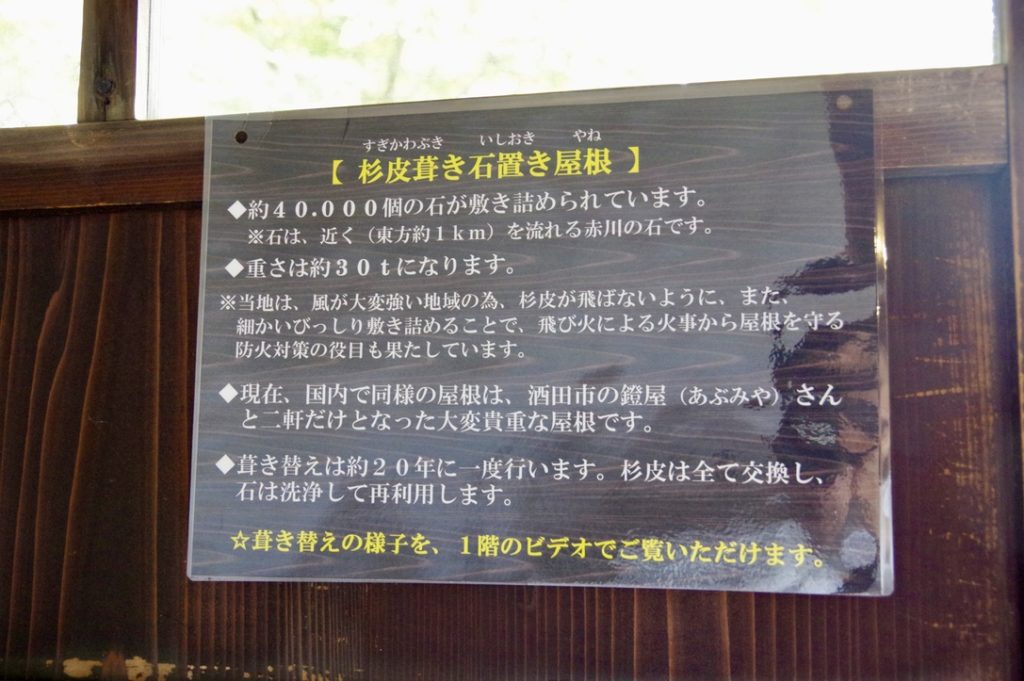
This is a wooden room of 60 tatami mats.
It was once used as a dining room.
It is deeply moving to think that many people, such as the servants who served here, came and went here.
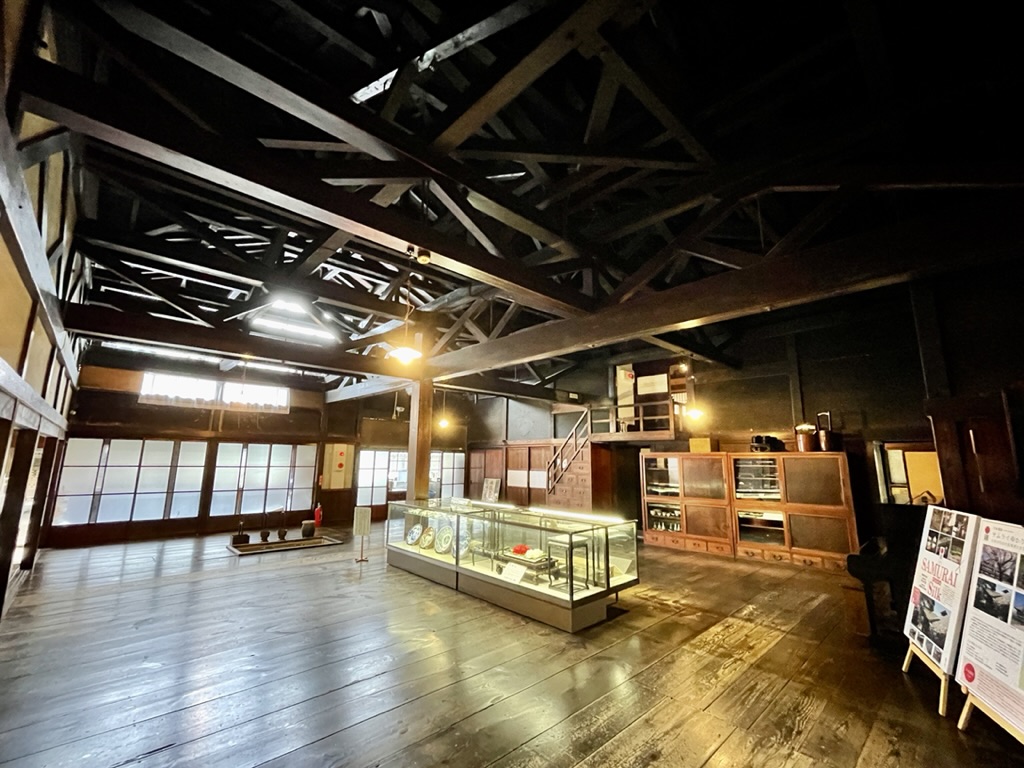
A lot of tatami mats are lined up, which is a characteristic structure.
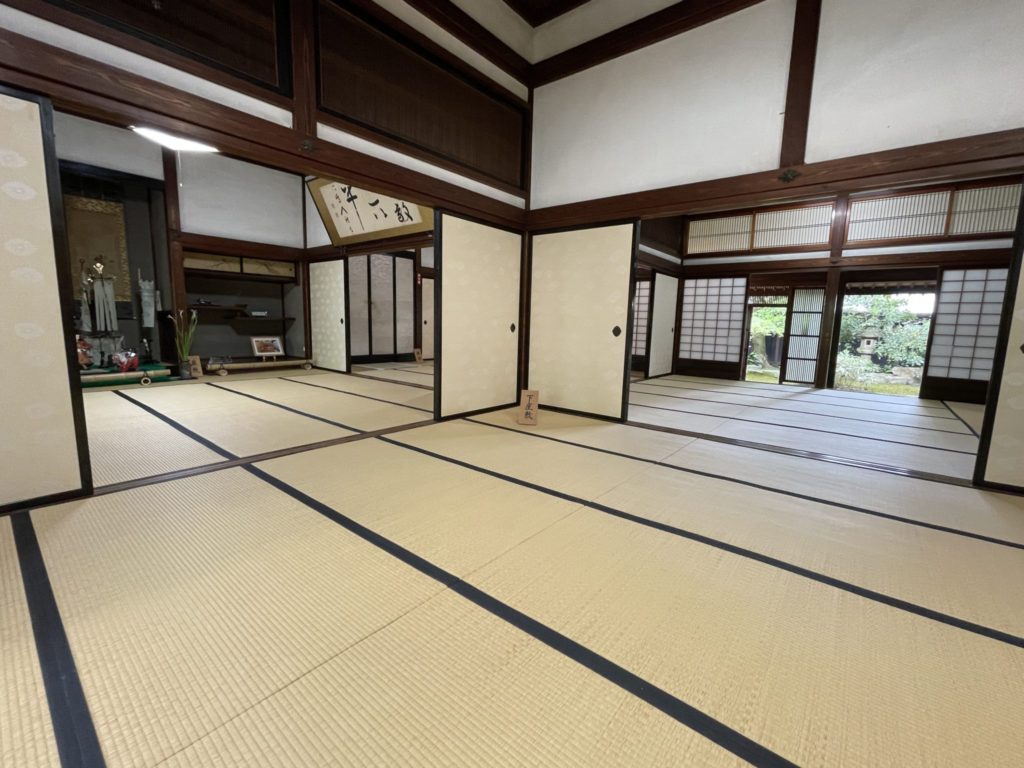
From the small tatami room for customers, you can see a spectacular garden like this.
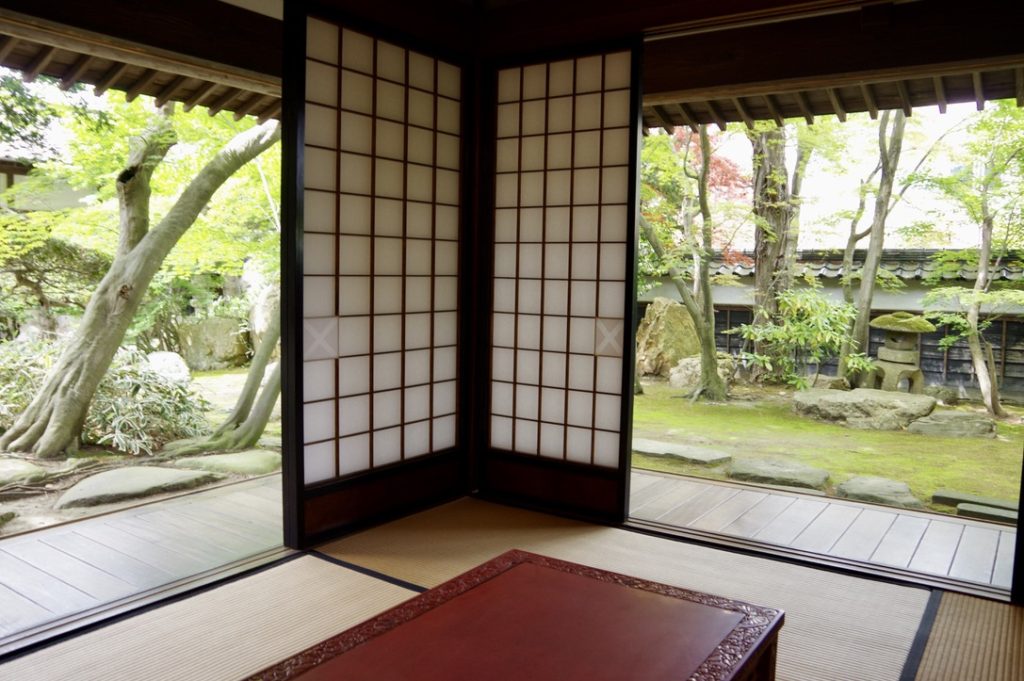
This small tatami room was also used for filming movies such as The Samurai I Loved and Samurai Marathon.
At the time of the interview, it was the season when fresh greenery was beautiful, but I wanted to see how it looks in autumn and winter.
Detailed information

-
Heishindo, the former residence of the Kazama family
1-17 Babacho, Tsuruoka City
0235-22-00150235-22-0015
・Former Kazama family villa Shakado
Next is the Kazama family’s former villa called “Shakado”.
When I was listening to the story at Heishindo, I head that azaleas were in full bloom at Shakado.
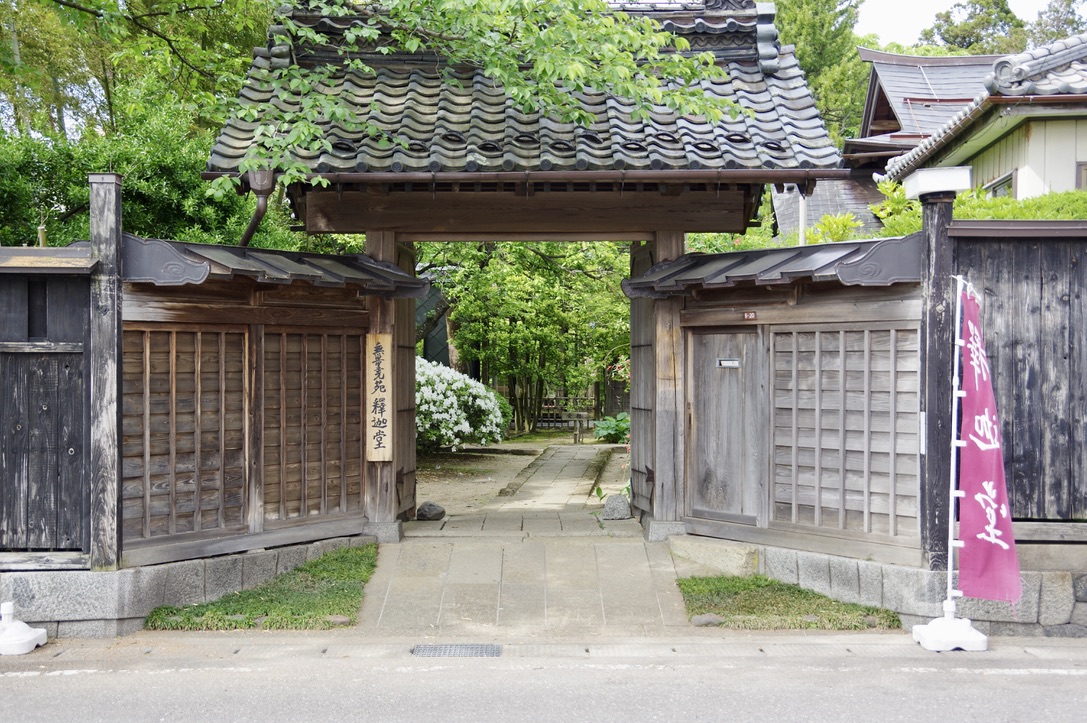
This was the villa of the Kazama family, and was used mainly for entertaining guests.
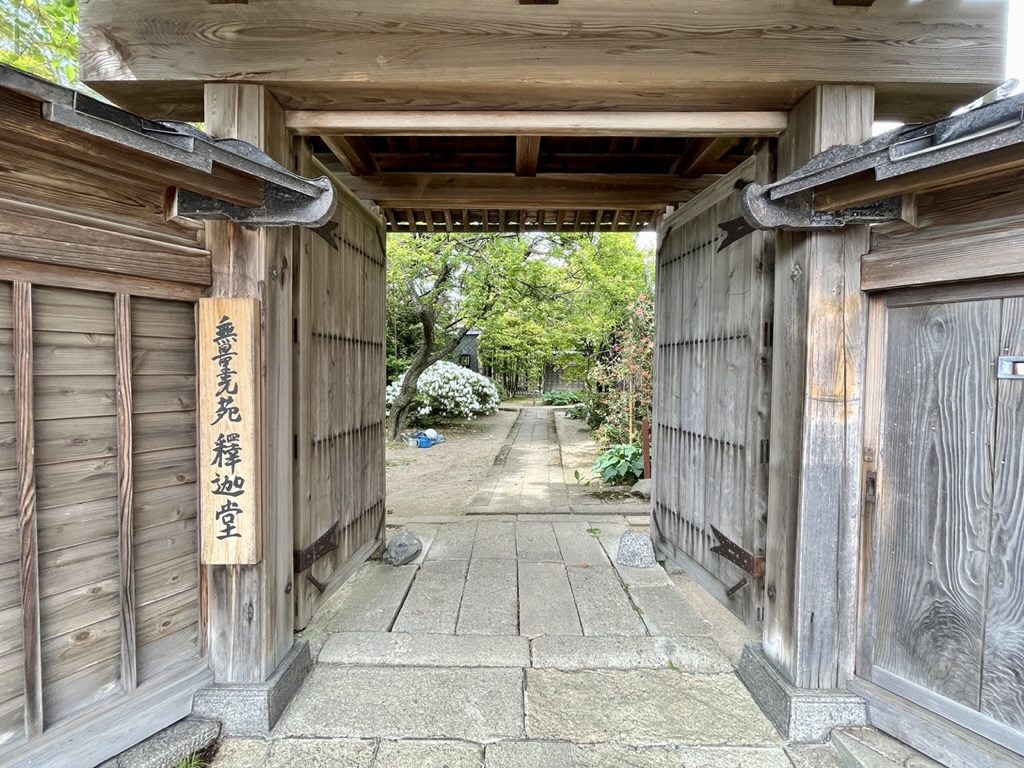
Now let’s take a look at the garden.
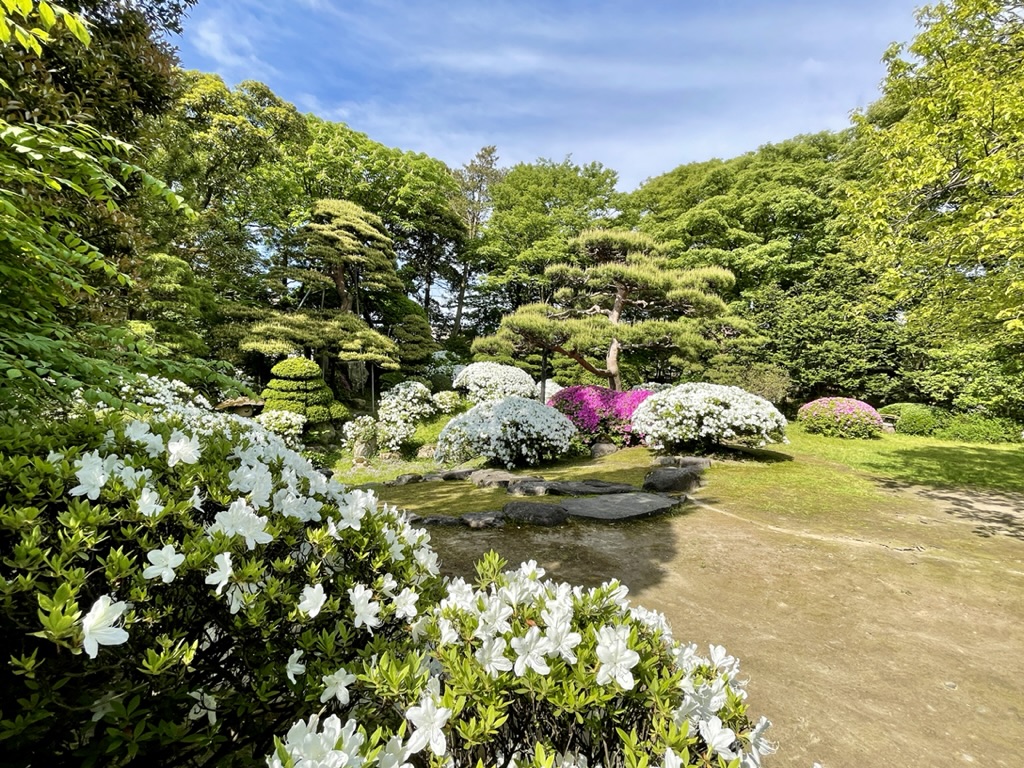
Surprisingly, the white and pink azaleas are in full bloom!
I was able to visit at the best time.
When you look out over the garden from inside the Shakado, the atmosphere is wonderful.
It’s going to be a photo that looks good no matter who takes it.
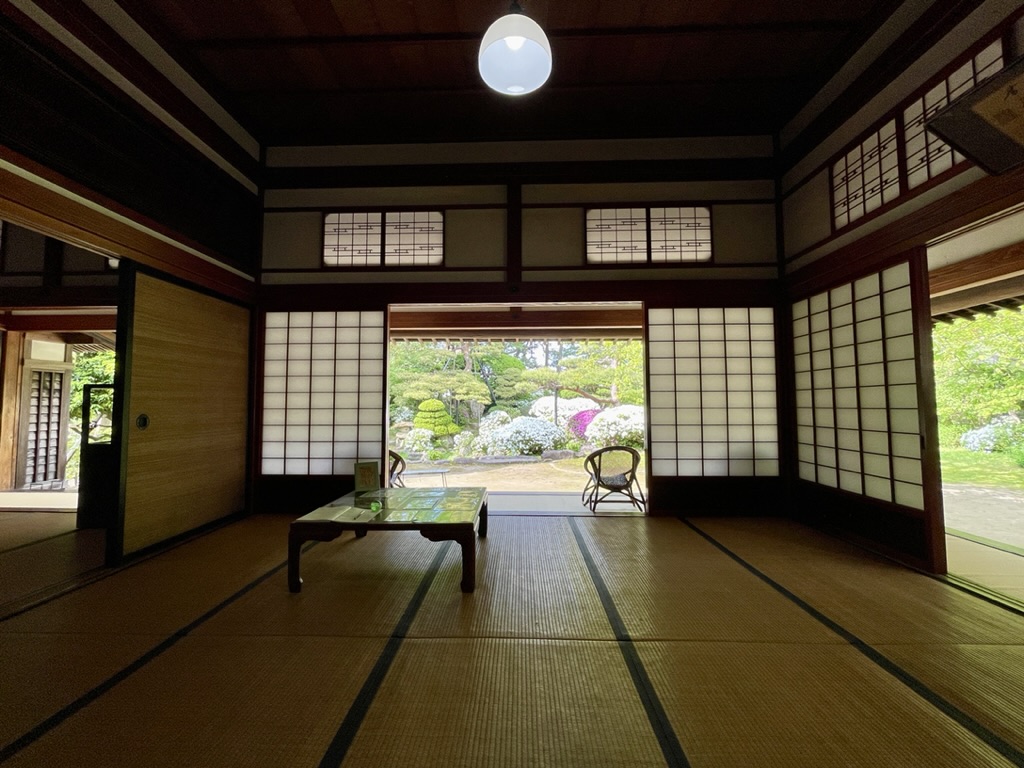
In the garden, not only azaleas but also various flower trees are planted.
It seems that you can enjoy the expressions of the four seasons.
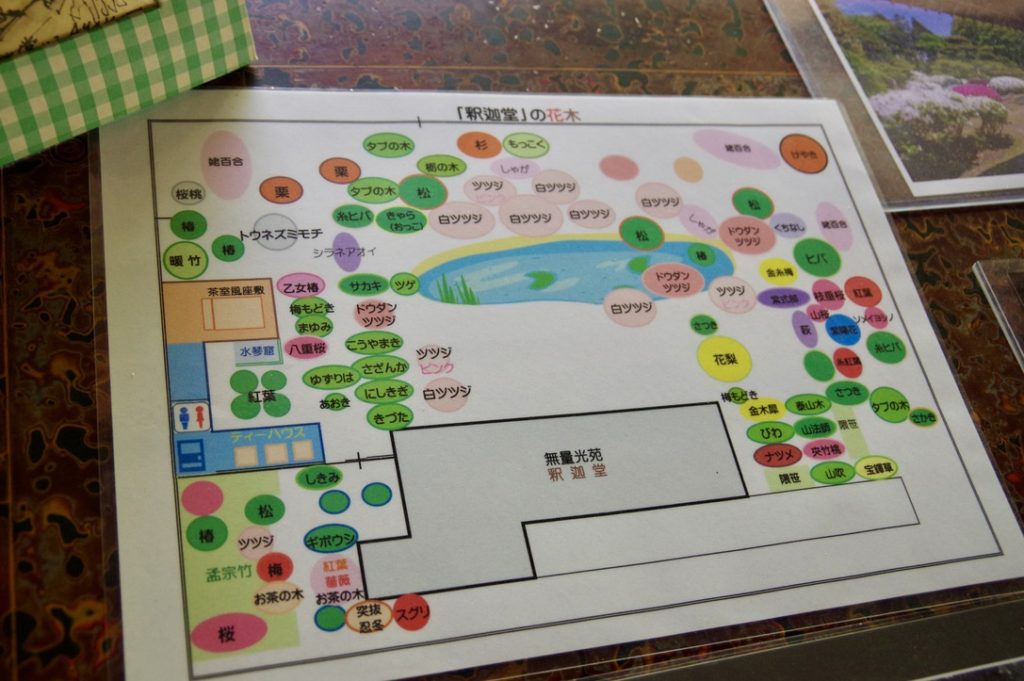
Spending time just relaxing on the porch and looking at the garden also feels great.
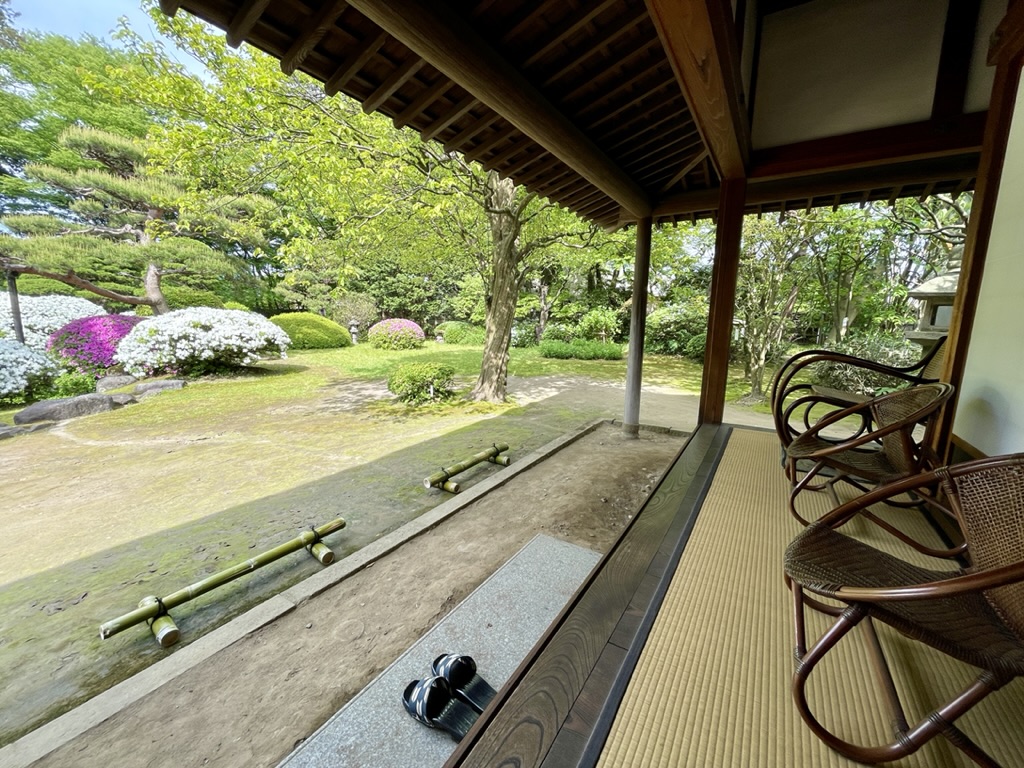
This is a sight that makes you forget you are in the center of the city.
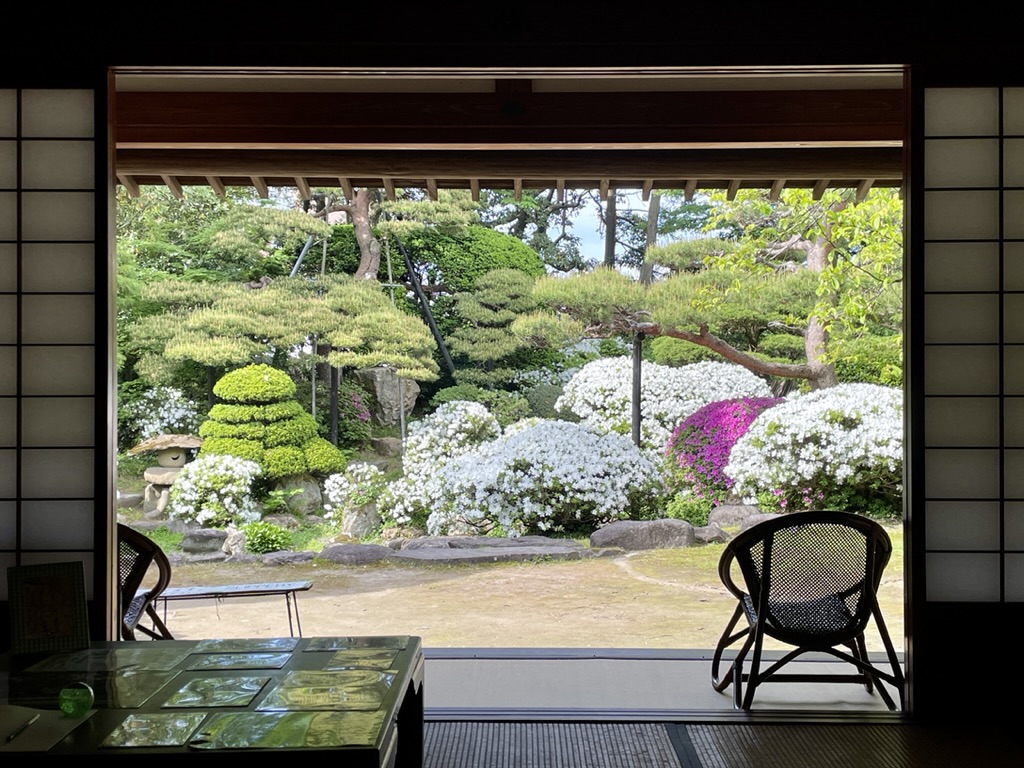
The garden is very large, and it seems that the whole site is 820 tsubo (2,710 square meters).
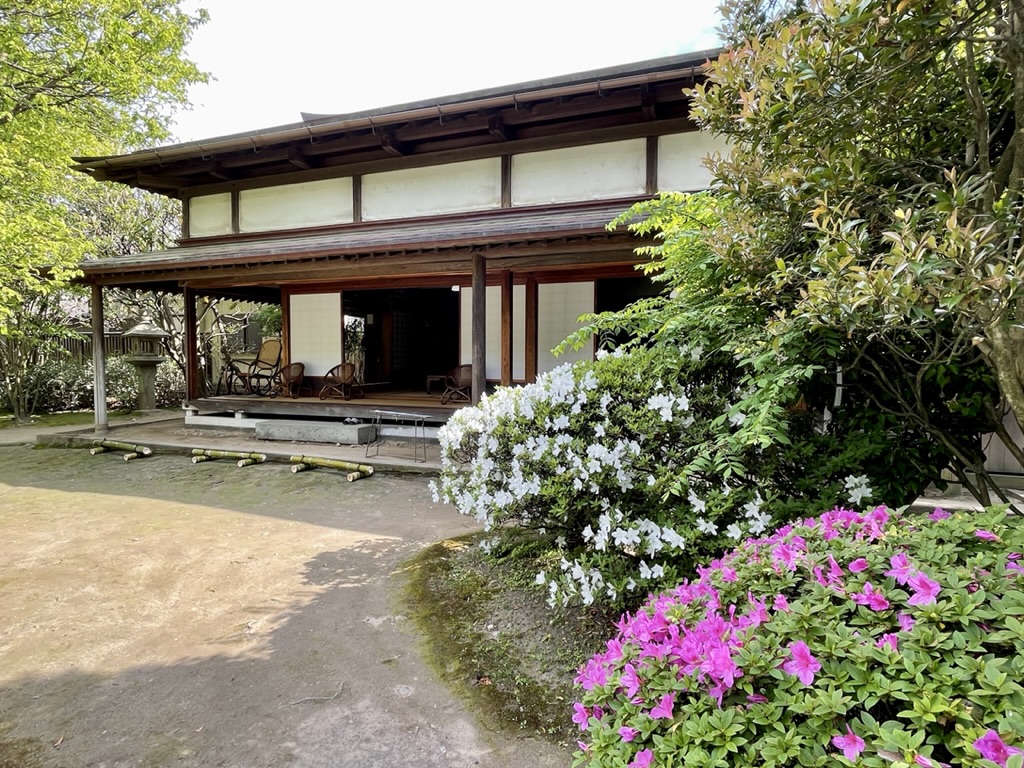
When you come to Tsuruoka for sightseeing, I would like you to experience not only Heishindo but also the garden of Shakado!
Detailed information

-
Kazama Family Former Villa Shakado
6-20 Izumicho, Tsuruoka City
0235-22-00150235-22-0015
4. Shonai Clan School Chidokan
Next is the Nationally designated historic site, Shonai Clan School Chidokan.
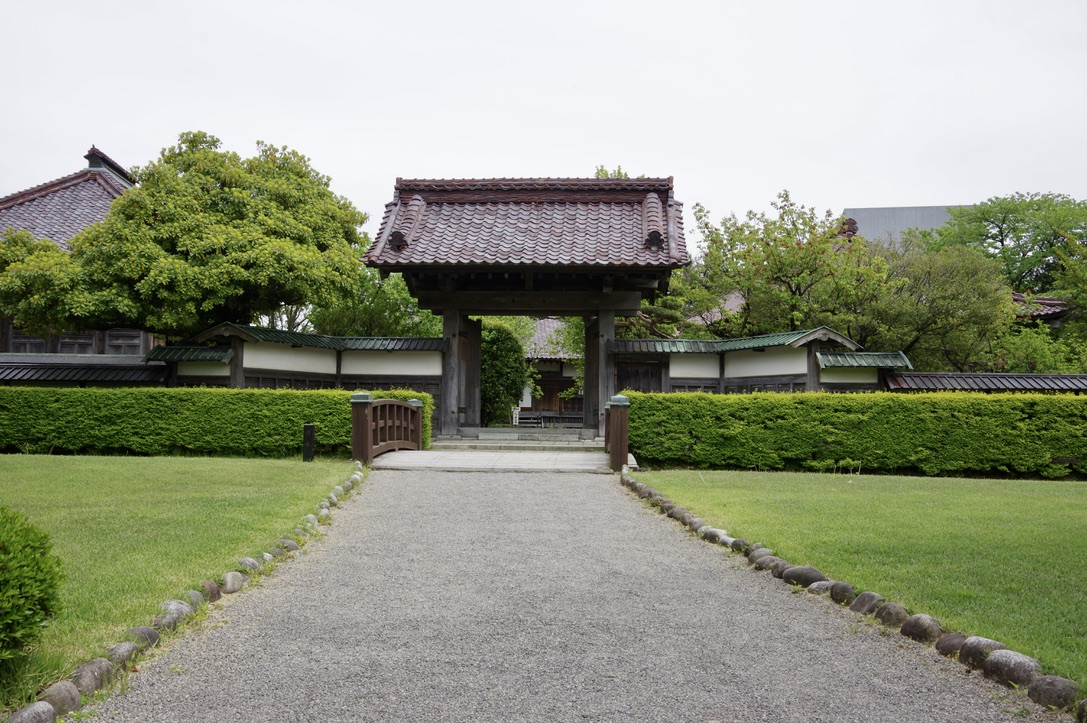
Chidokan is a clan school that was established in 1805 to revitalize the decaying culture of the Shonai domain and promote the administration of the Shonai clan.
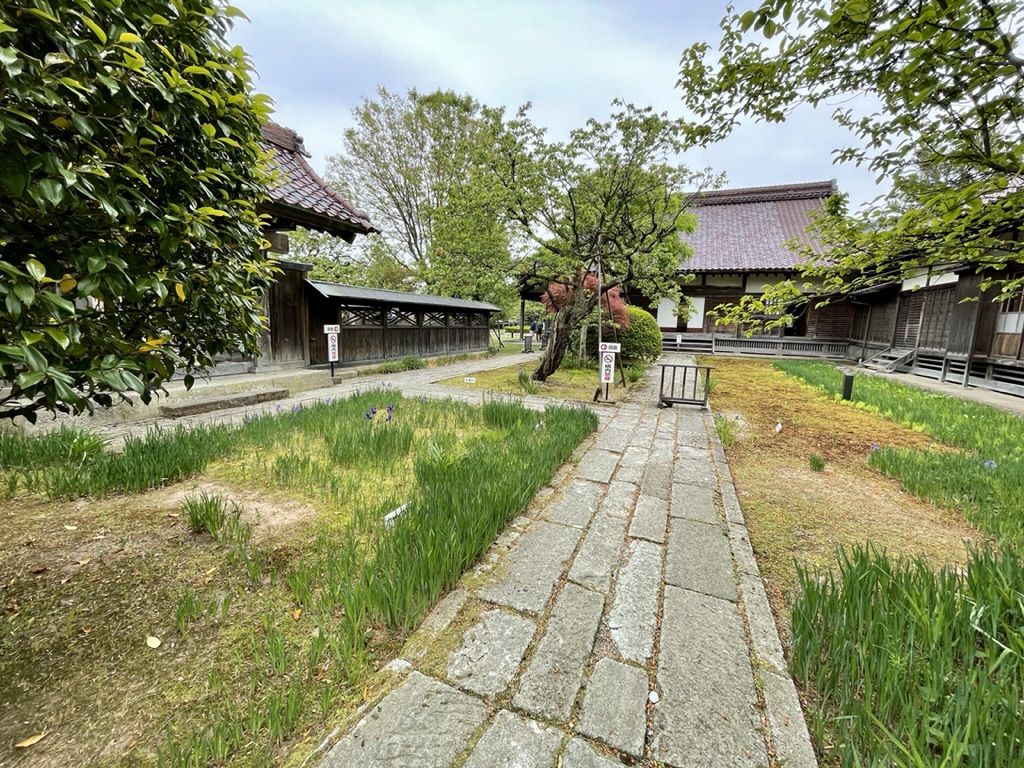
It is now open to the public.
It is a facility where many materials related to education at that time are exhibited.
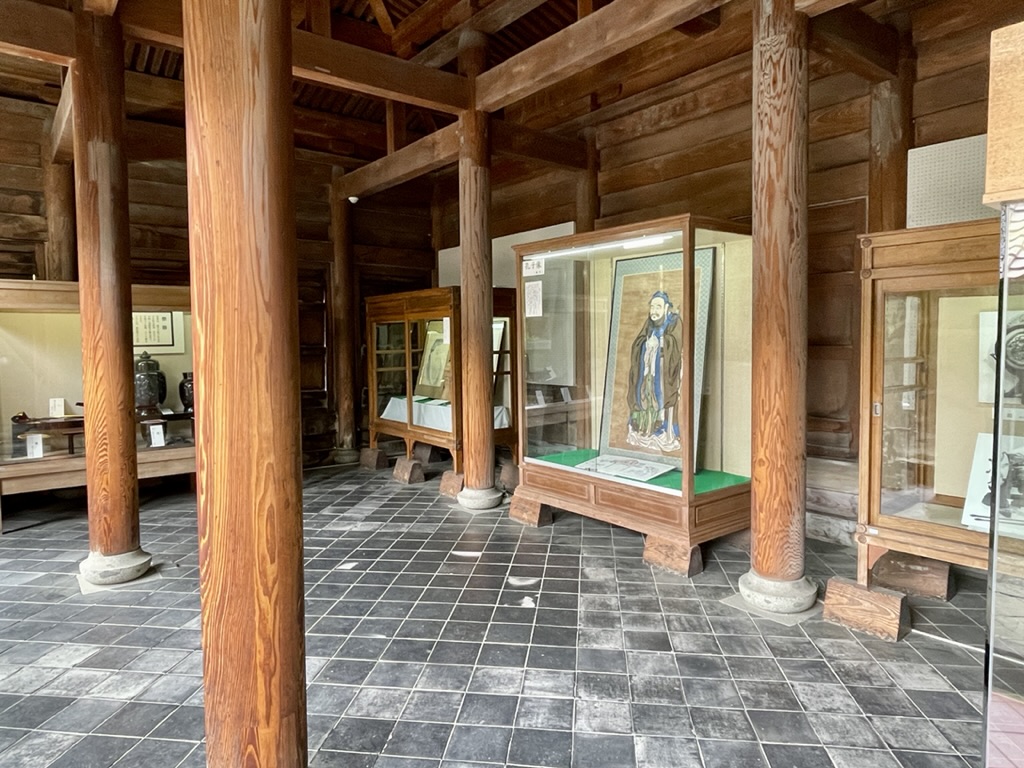
This large building was said to have been a lecture hall for students to gather for events such as opening ceremonies.
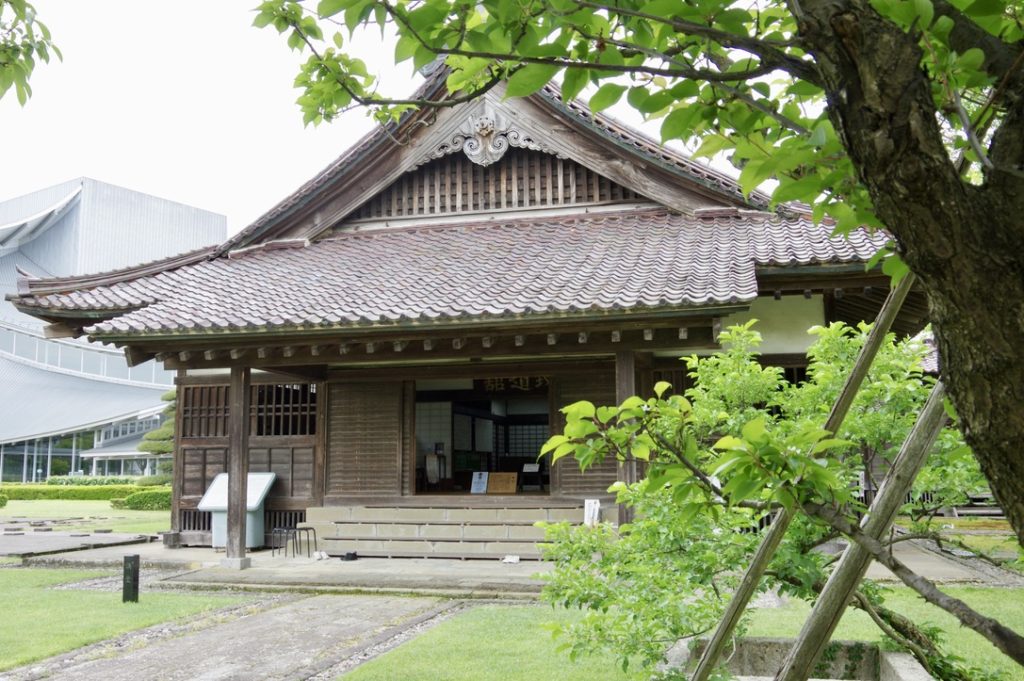
Inside, you will find materials related to Soraigaku, an academic discipline that was widely spread in the Shonai domain.
It is said that even those who were in leadership positions in the clan studied the teaching of the scholar Sorai (1666-1728).
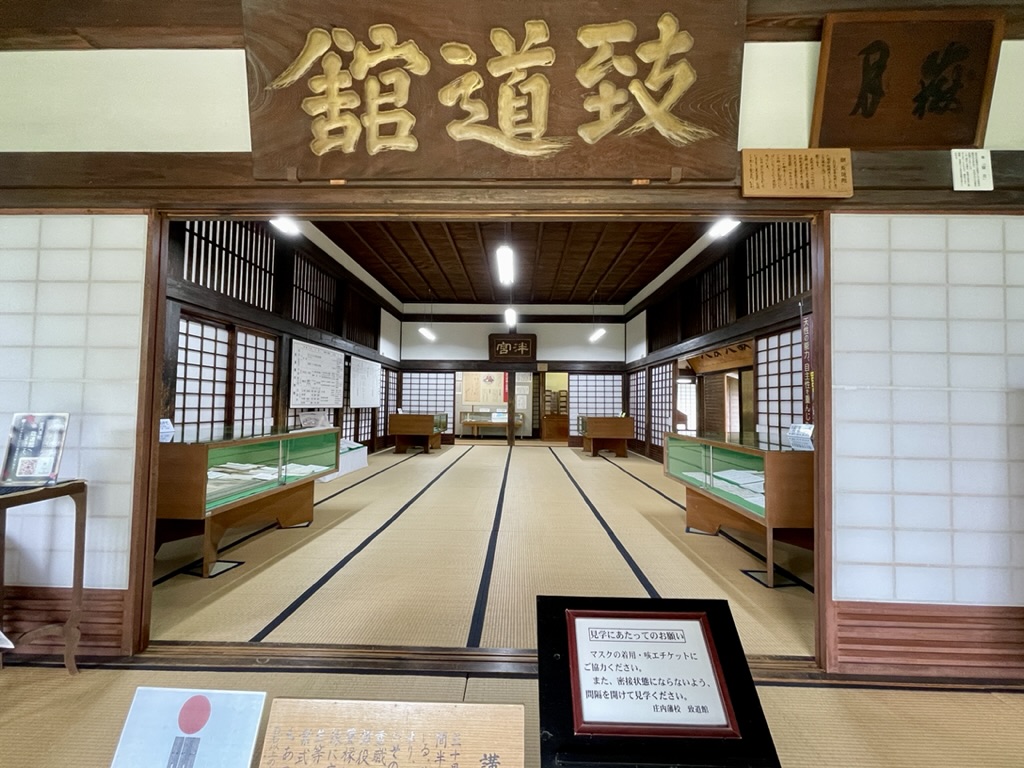
In addition, there was an exhibition of items dating from the introduction of Sakai clan up until the final years of Edo period in commemoration of their 400th anniversary.
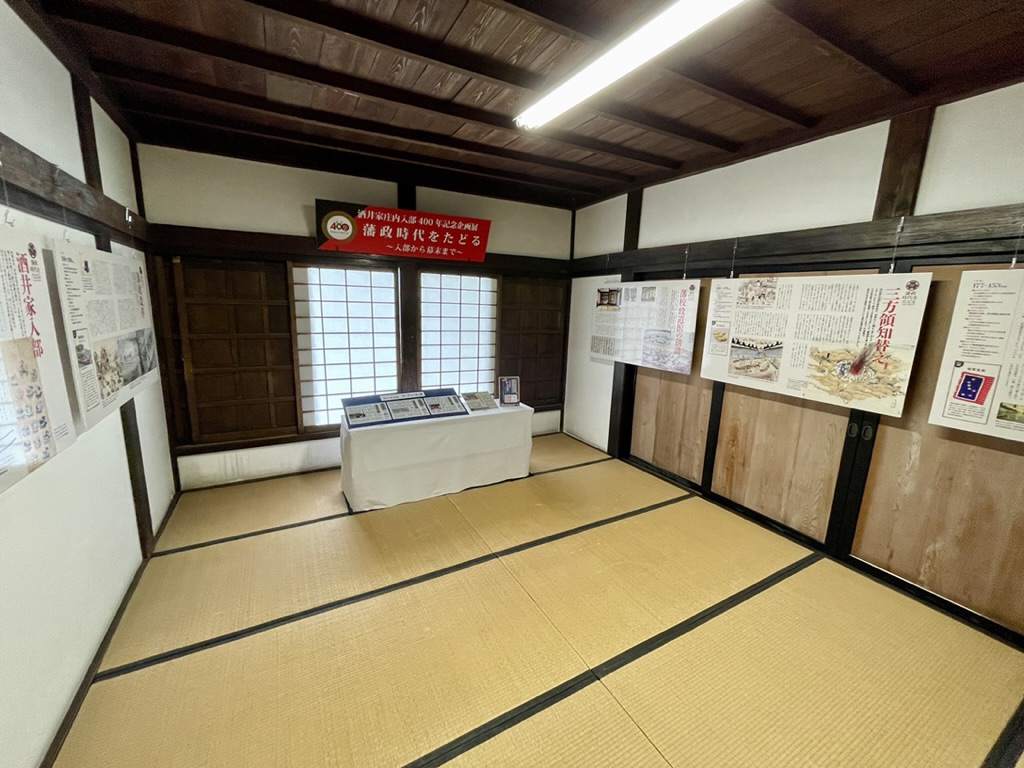
I looked around the auditorium.
The contrast with the modern building in the back is somehow emotional and wonderful.
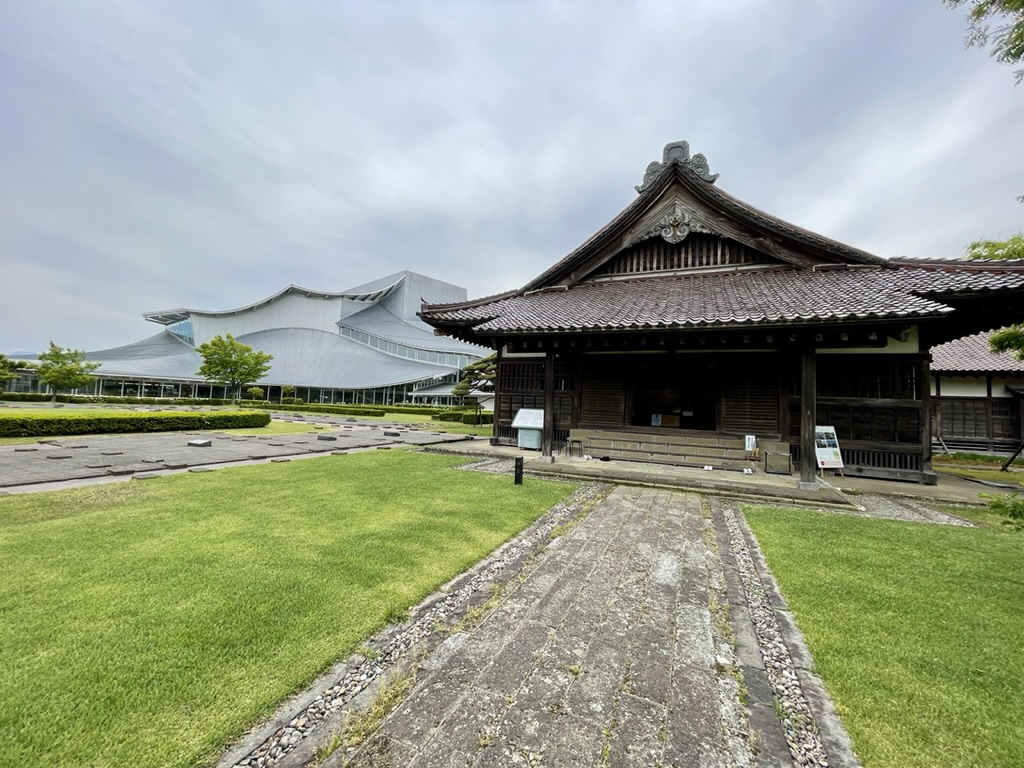
Even if you don’t have prior knowledge of the Shonai clan or Sorai, there are plenty of interesting exhibits such as “The connection between the Shonai clan and Takamori Saigo.”
It’s right in front of Tsuruoka Park, so it’s a recommended spot when you’re sightseeing around the area.
Detailed information

-
Shonai Clan School Chidokan
11-45 Babacho, Tsuruoka City
0235-23-46720235-23-4672
5. Taihokan
The next place I visited was the retro-style Taihokan in Tsuruoka Park.
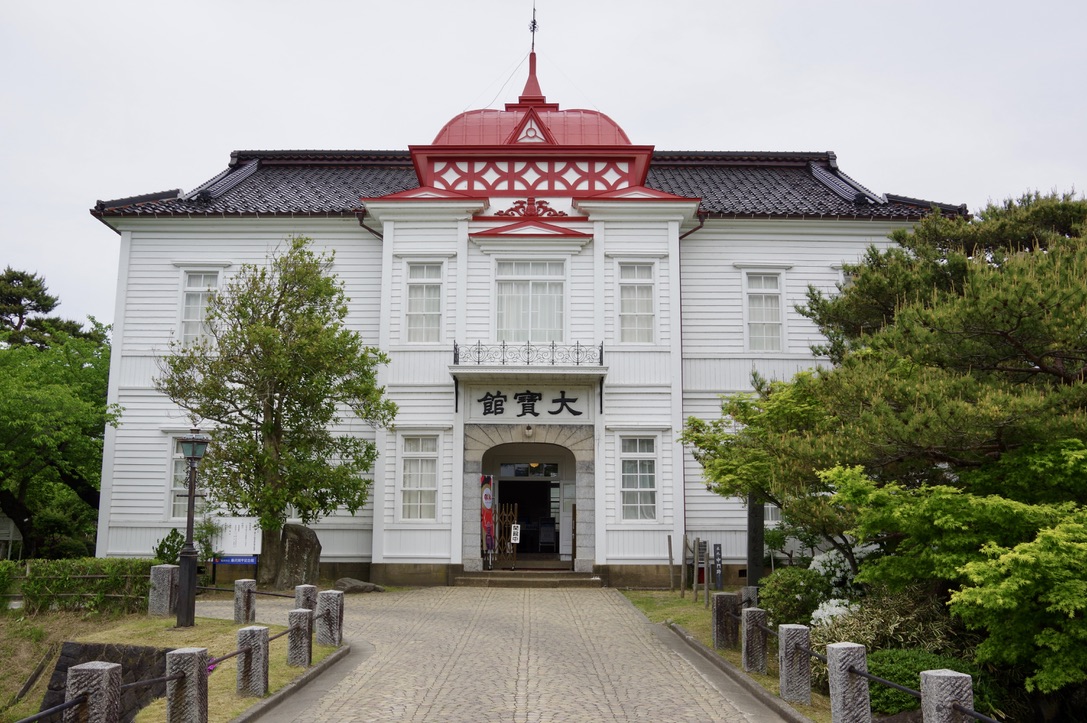
If you walk along the moat of Tsuruoka Park, you will see a Western-style building like this.
This building dates from the early Taisho era and is designated as a tangible cultural property of Tsuruoka City.
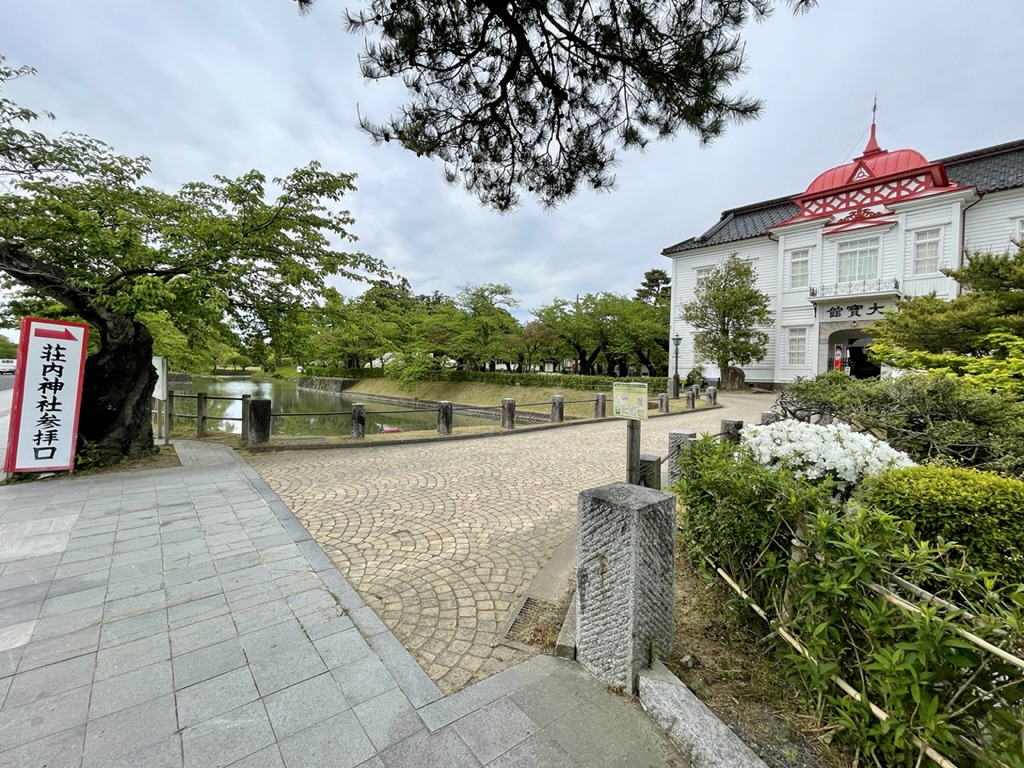
At the Taihokan, materials related to people related to Tsuruoka are displayed.
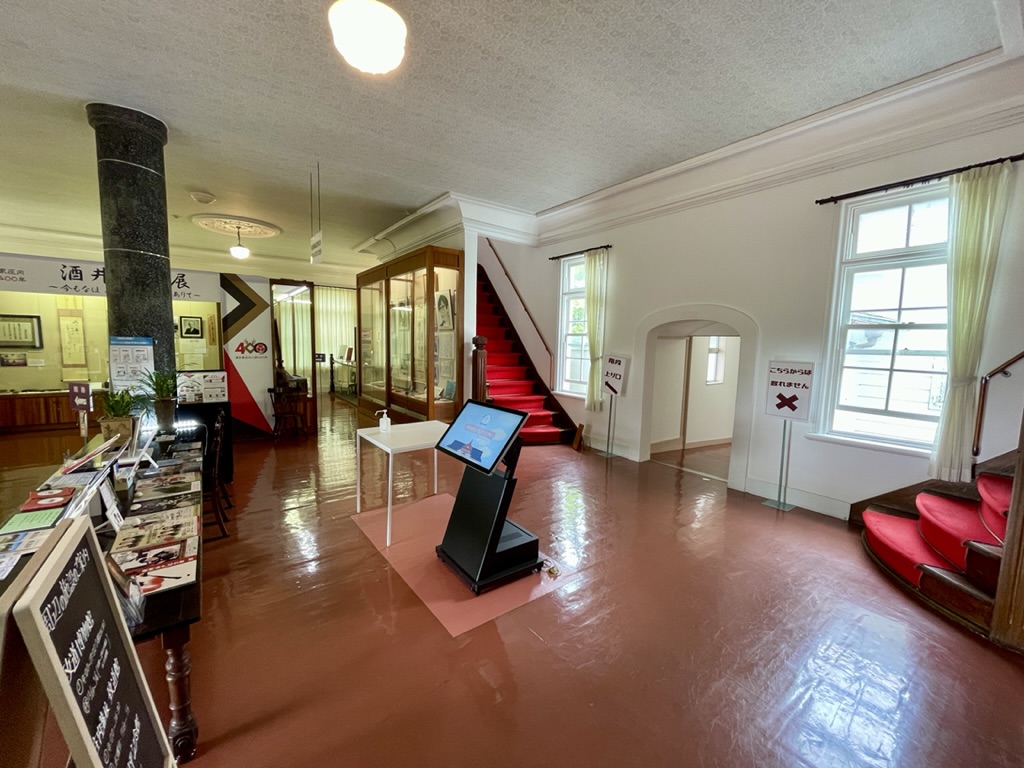
This year is the 400th anniversary of the introduction of the Sakai clan, so there was an exhibition related to Tadaaki Sakai, the 17th head of the Sakai family and former lord of the Shonai domain.
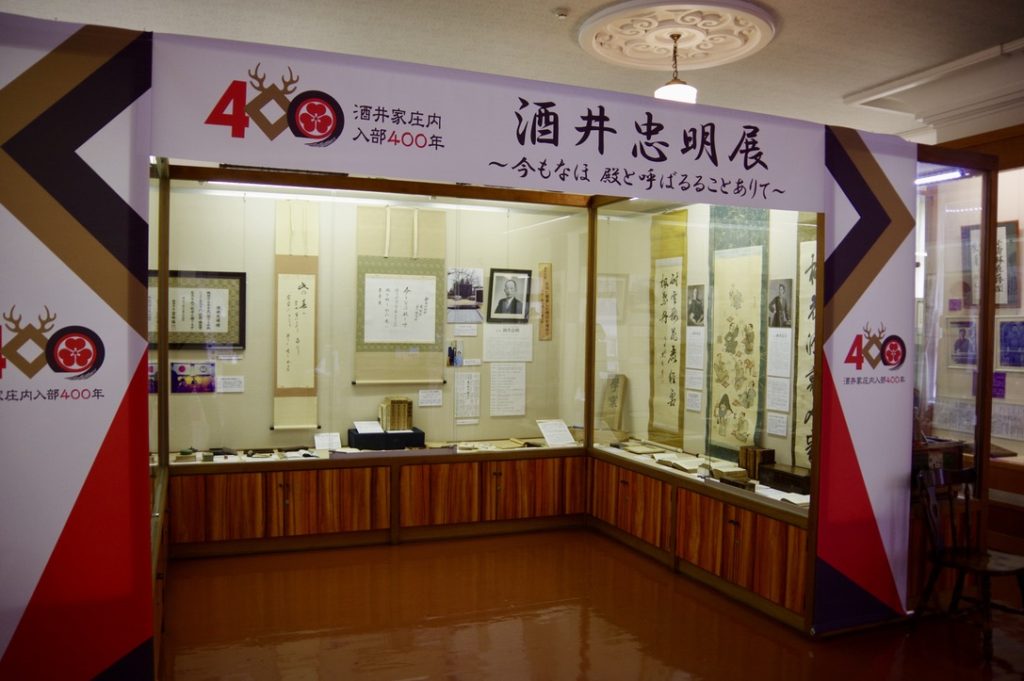
This time, I got special permission to take pictures because it was an interview, but usually photography is prohibited inside the Taihokan.
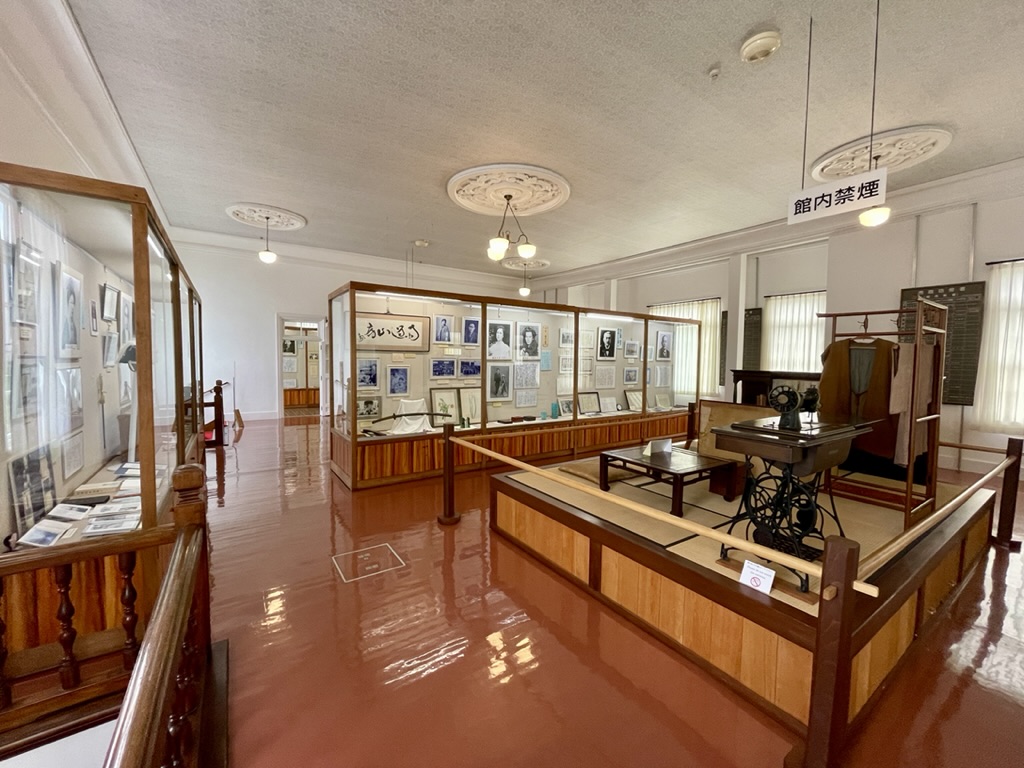
In addition, there are many other exhibits related to Meiji era literary master Chogyu Takayama and natural scientist Taneyasu Matsumori.
The symmetrical and simple yet beautiful interior is worth seeing!
Detailed information

-
Taihokan
4-7 Babacho, Tsuruoka City
0235-24-32660235-24-3266
6. Tsuruoka Park & Shonai Shrine
・Tsuruoka Park
And finally, let’s head to Tsuruoka Park, which can be said to be the center of each of the attractions introduced this time.
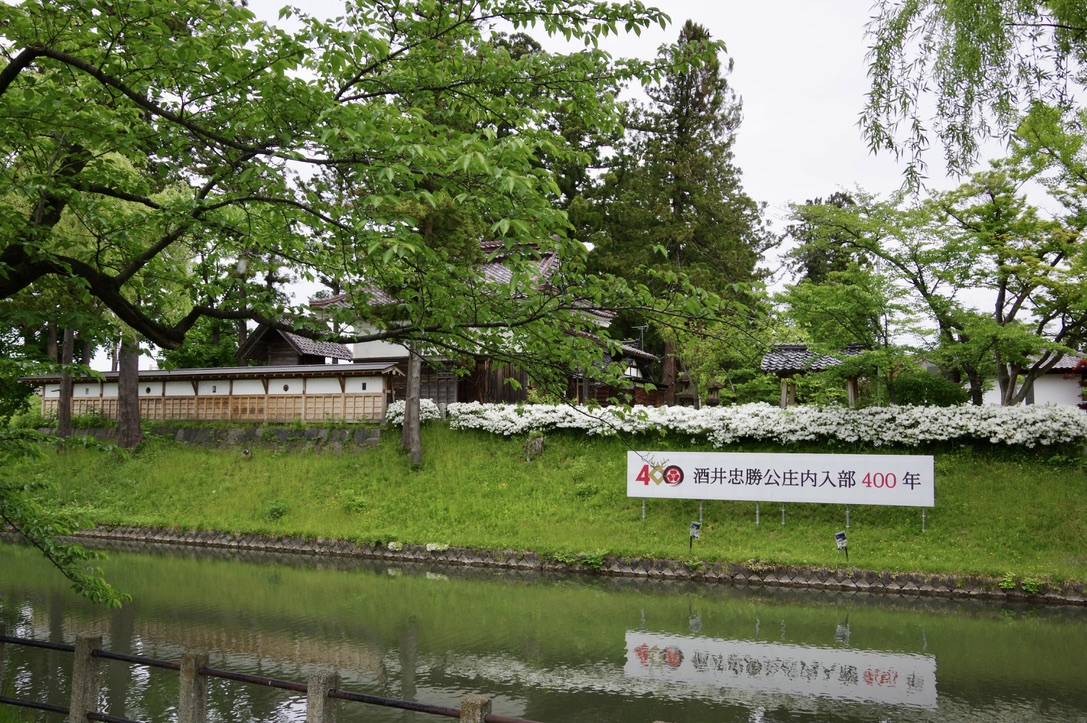
The ruins of Tsurugaoka Castle, where the Sakai family lived.
The beauty of fresh greenery and flowers catches your eye as you walk through Tsuruoka Park.
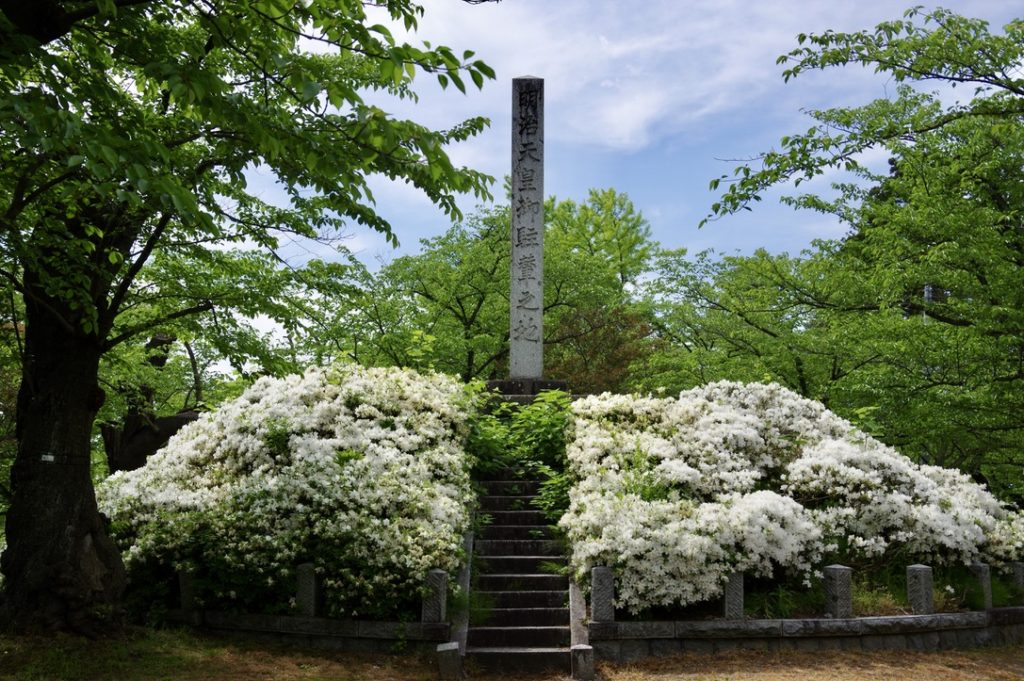
The wisteria flowers are just about to bloom, and there is a pleasant scent in the air.
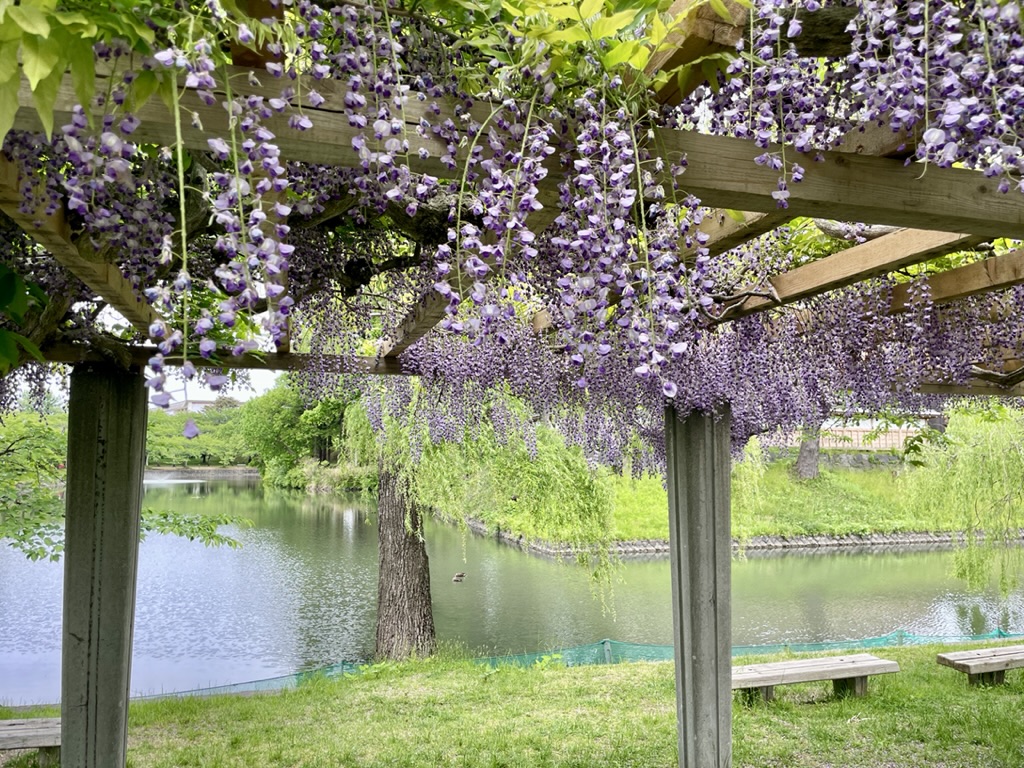
A promenade is maintained, and citizens walking are also a sneak peek.
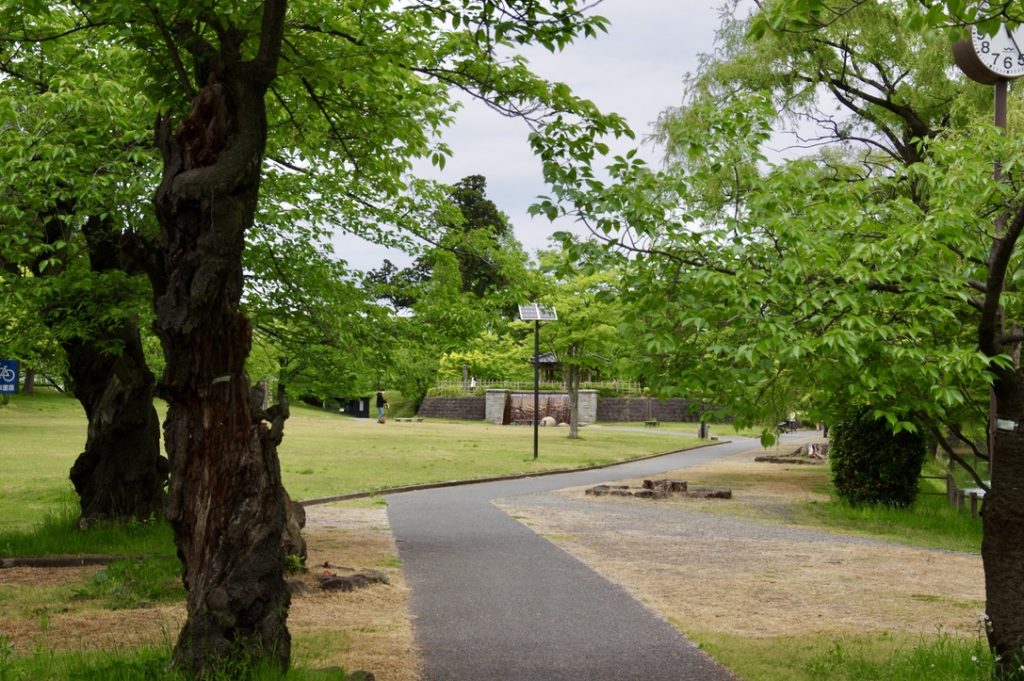
It also has a new and clean toilet!
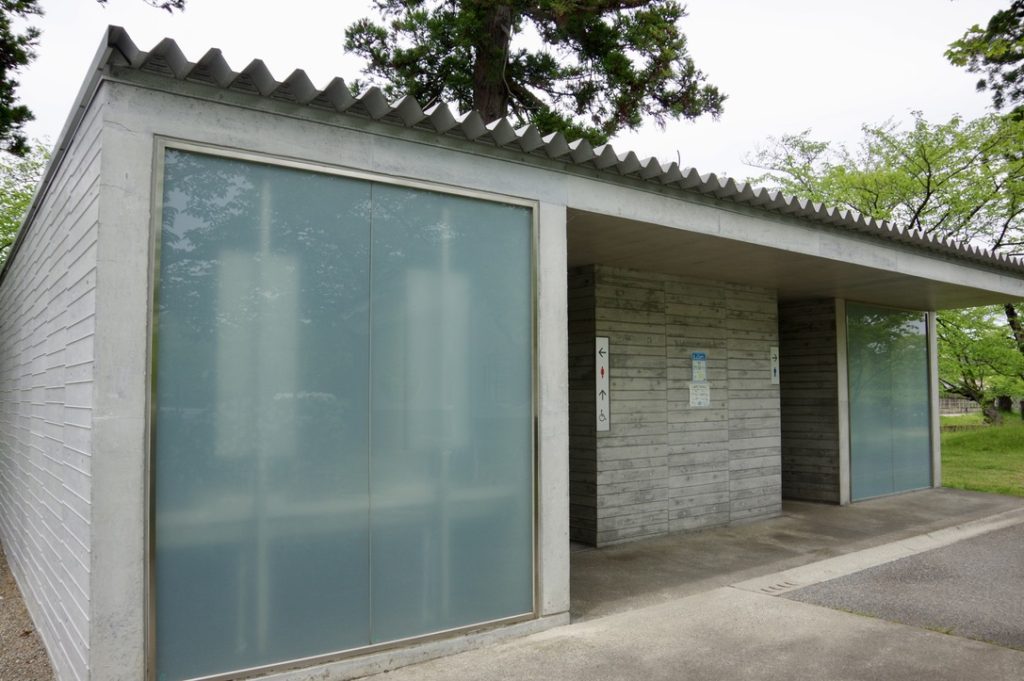
There is also a water field, and the sound of flowing water is soothing.
It’s a refreshing view.
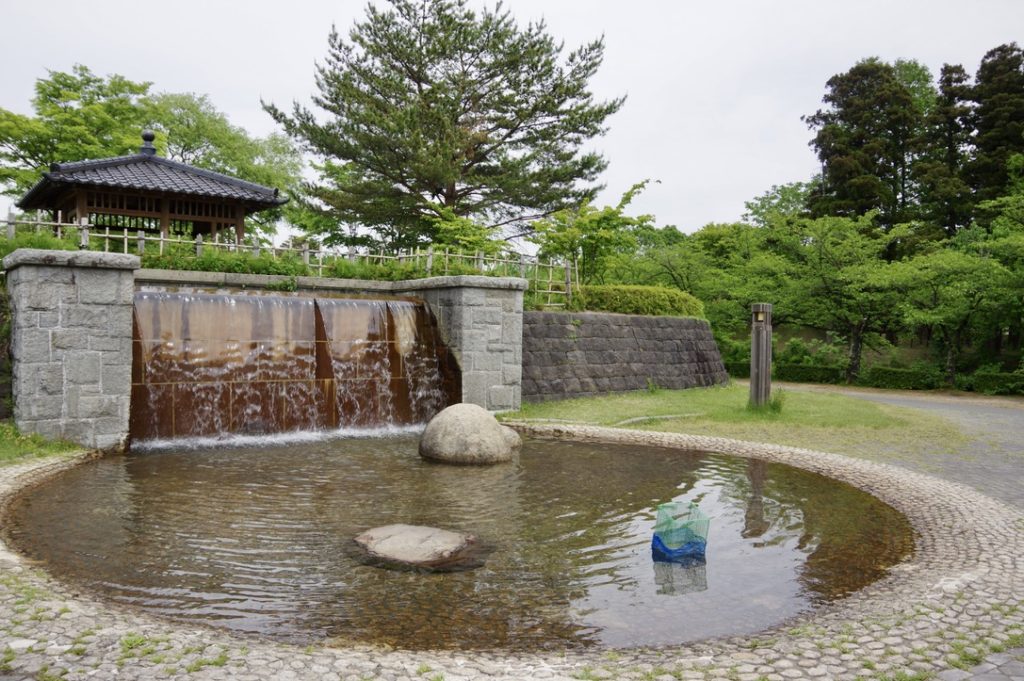
On a sunny day, it would be nice to have a picnic lunch here!
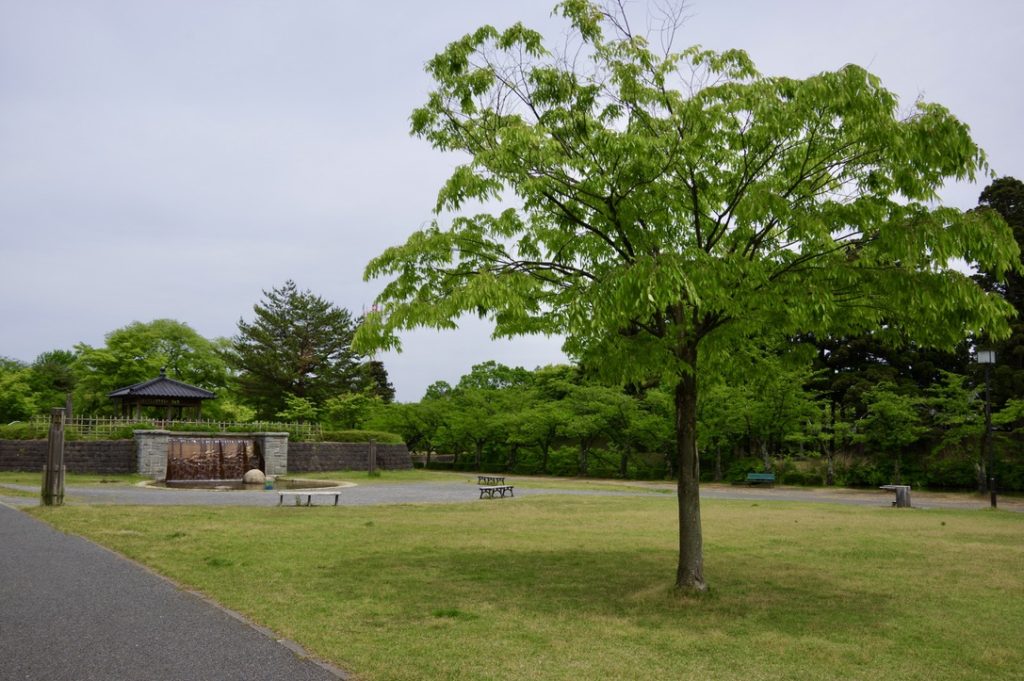
You can also take a walk along the waterfront.
Many irises were beginning to bloom.
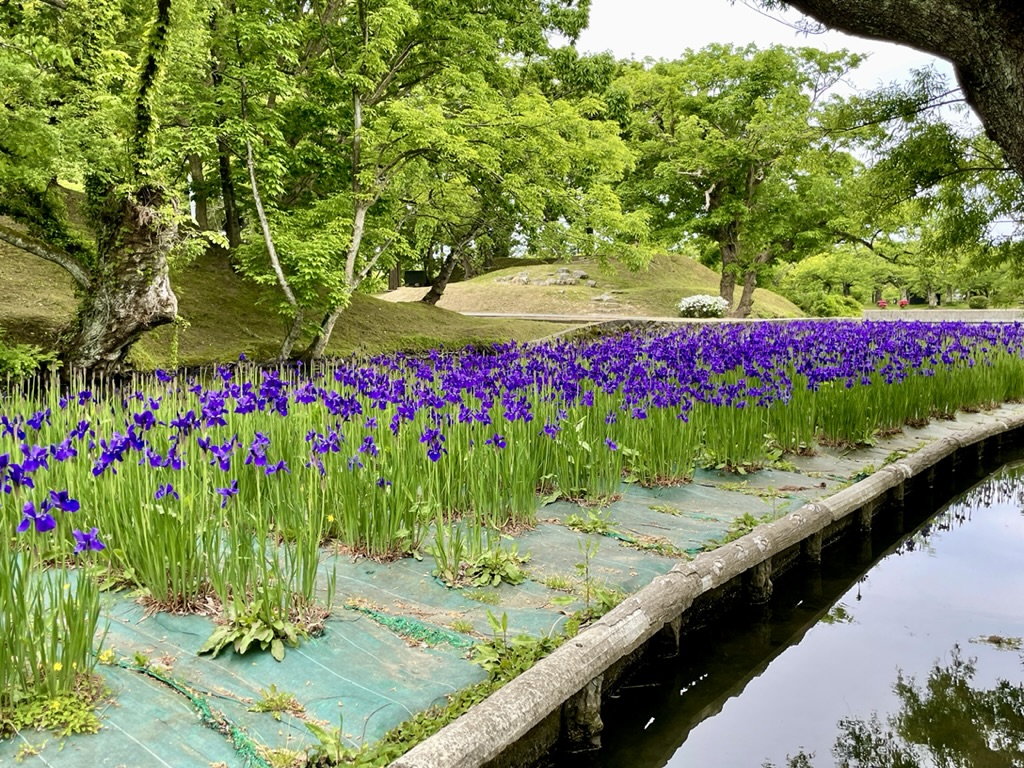
It’s so many that you can’t help but be fascinated!
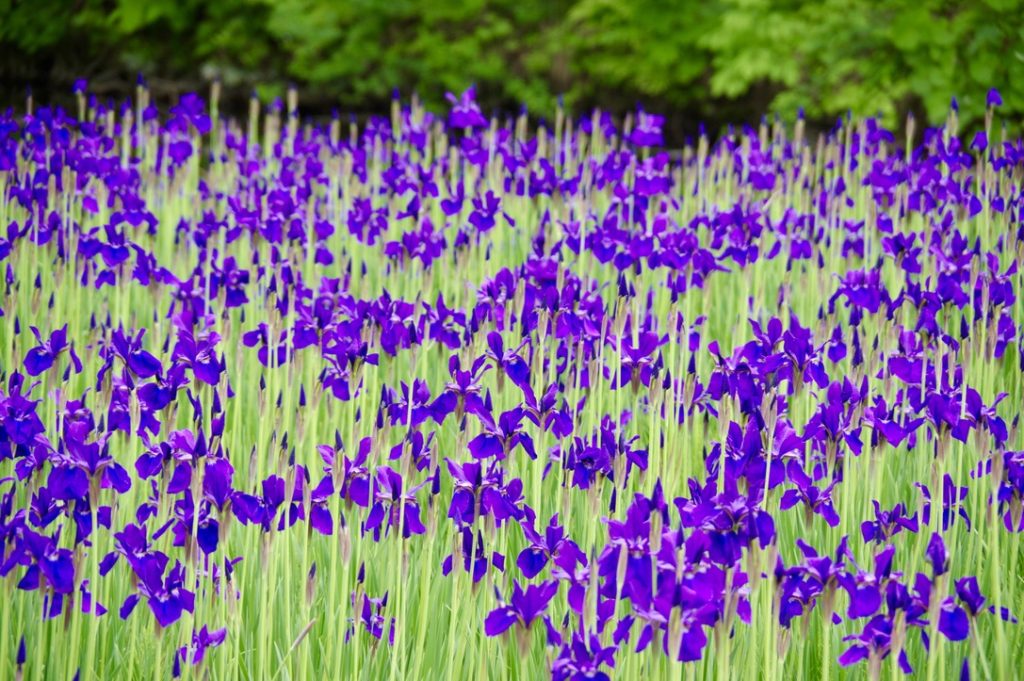
Tsuruoka Park is a popular cherry blossom viewing spot in spring.
It is perfect for a walking course and is recommended.
Detailed information
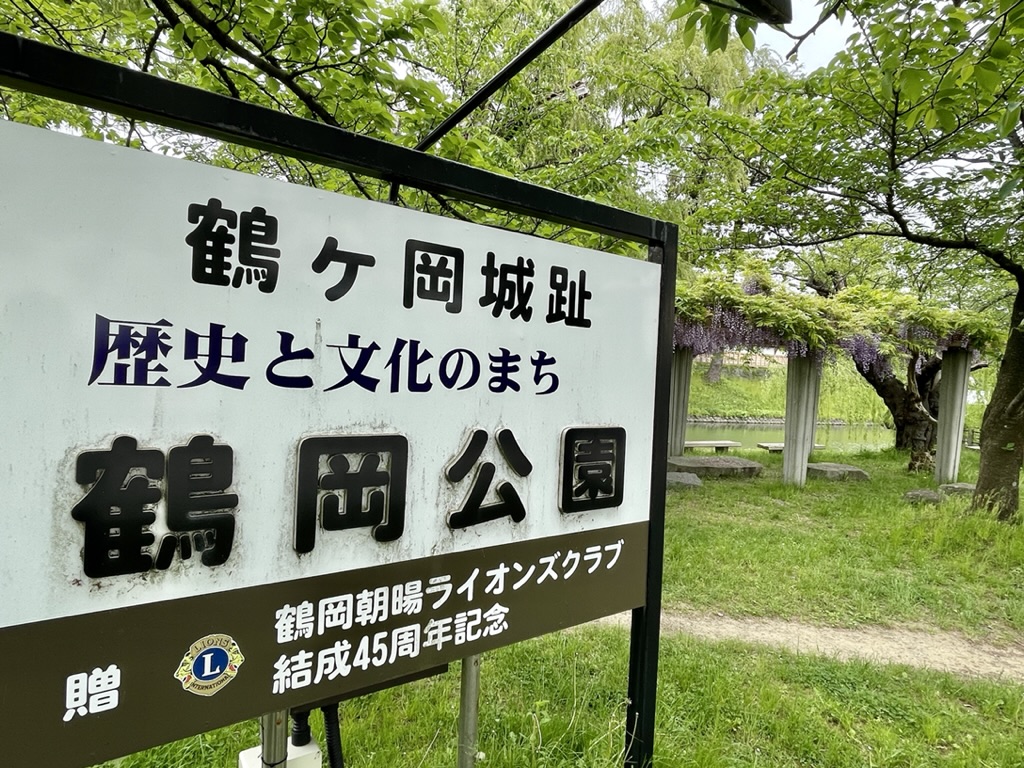
-
Tsuruoka Park
4 Babacho, Tsuruoka City
0235-25-21110235-25-2111
・Shonai Shrine
In addition, we also visited the Shonai Shrine located in Tsuruoka Park.
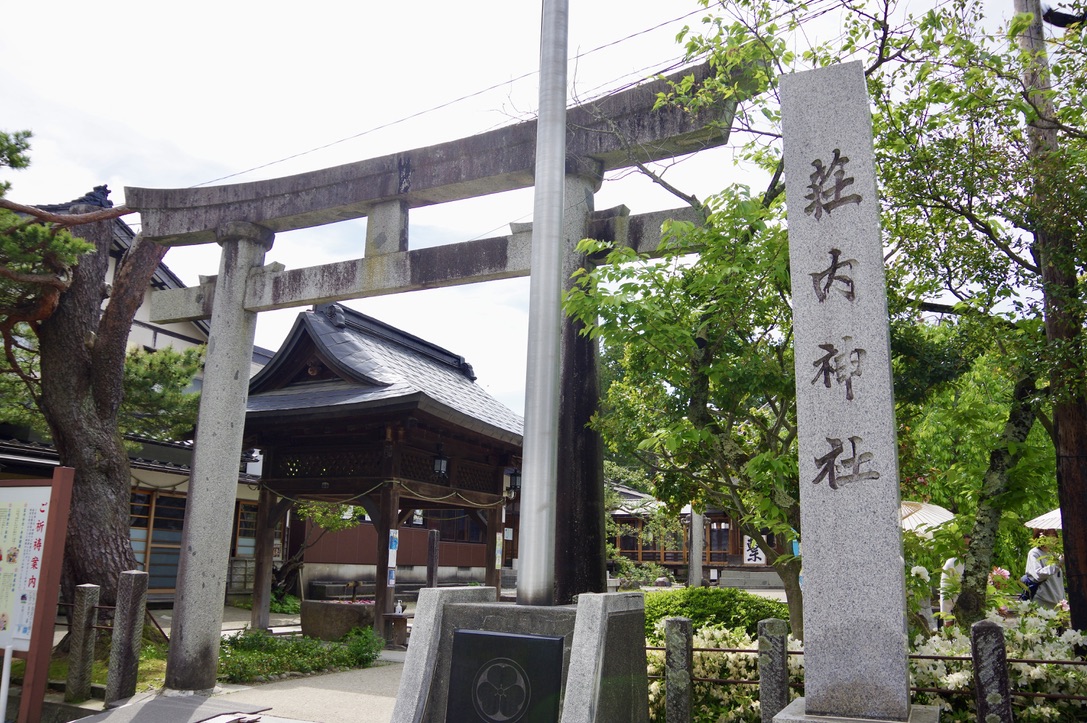
What suddenly caught my eye was this hanachozu, a flower-decorated water bassin.
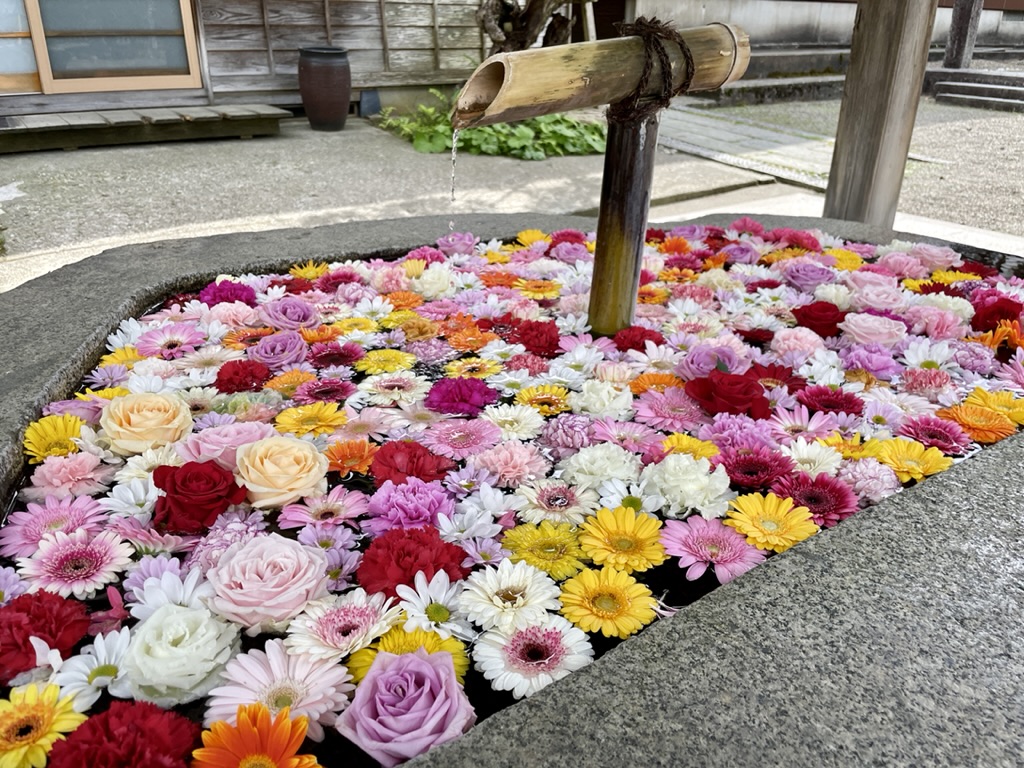
How cute!
At the time of the interview, it was crowded with many visitors taking pictures.
This flowery bassin is a popular spot on SNS.
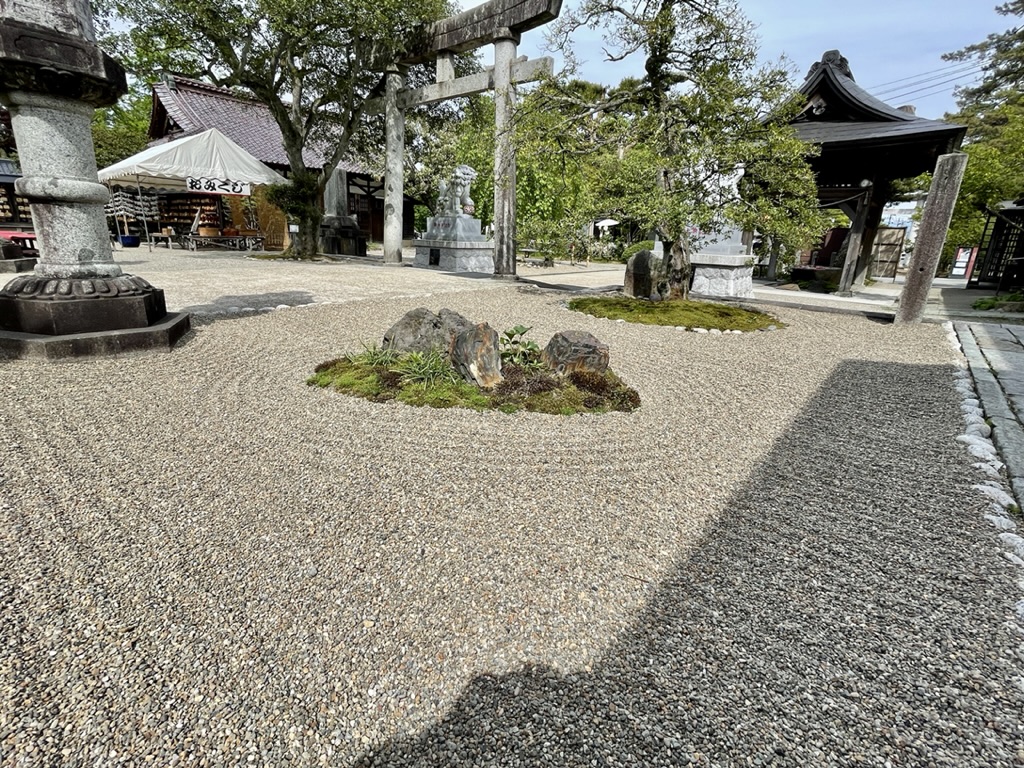
The Shonai Shrine is located on the site of a former castle.
It is said to enshrine four feudal lords.
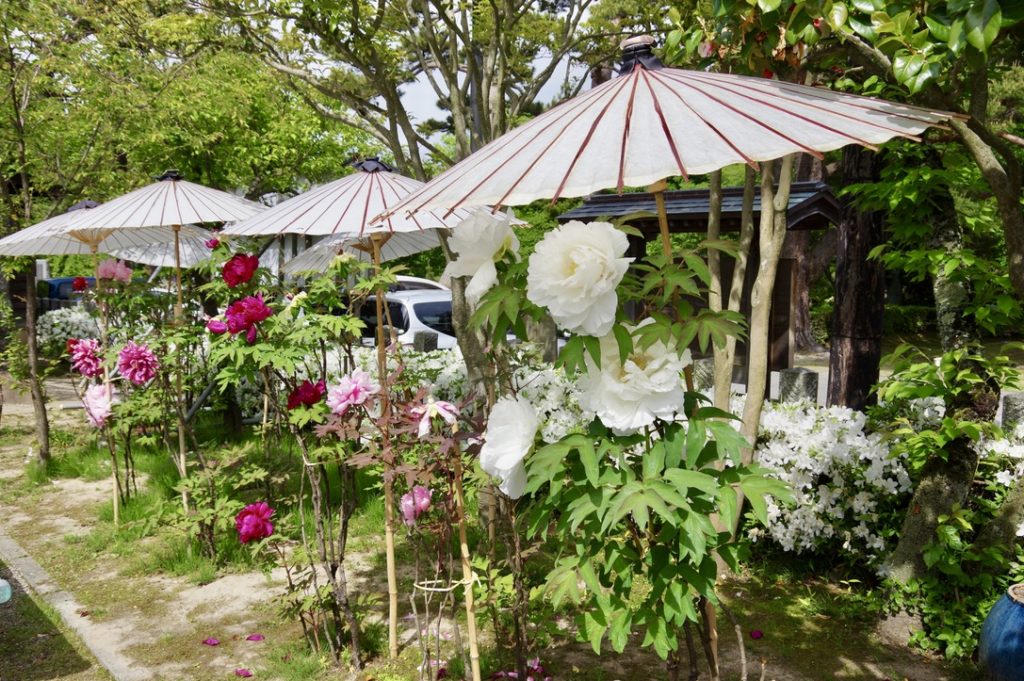
While it is a place where you can feel history, on the other hand, there is also a charm that attracts the younger generation, such as the hanachozu and the mizu mikuji for fortune telling.
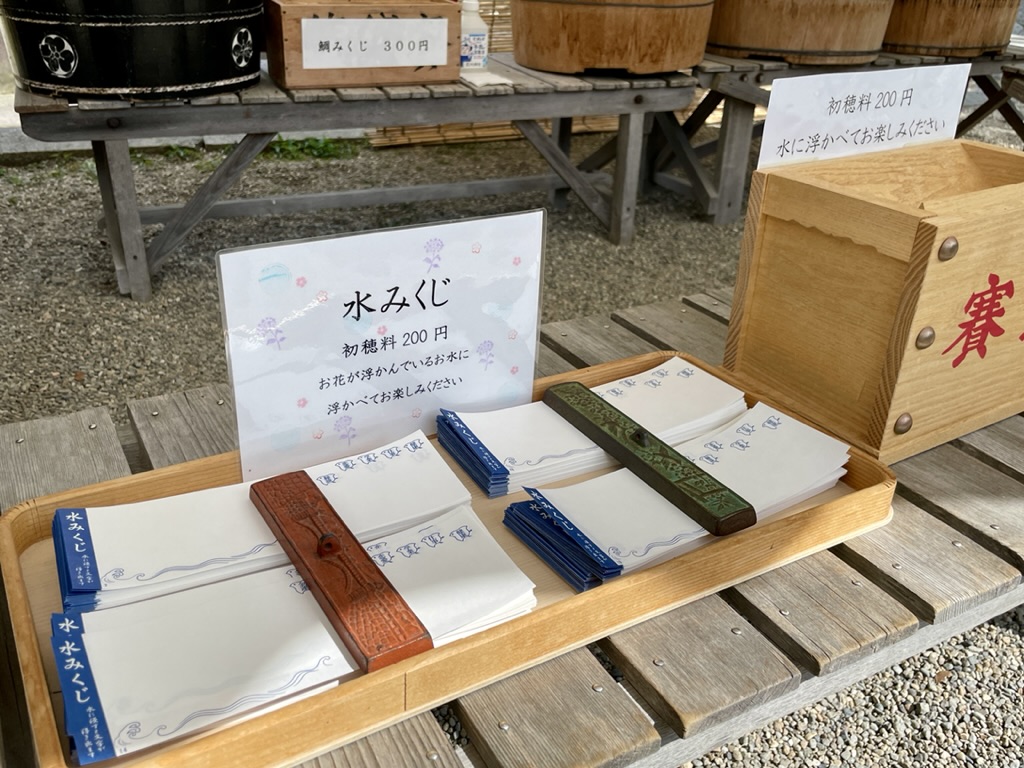
Depending on the time of year, you can get various kinds of beautiful Shuin stamps, which is said to have led to a high degree of attention.
If you are interested, please check it out.
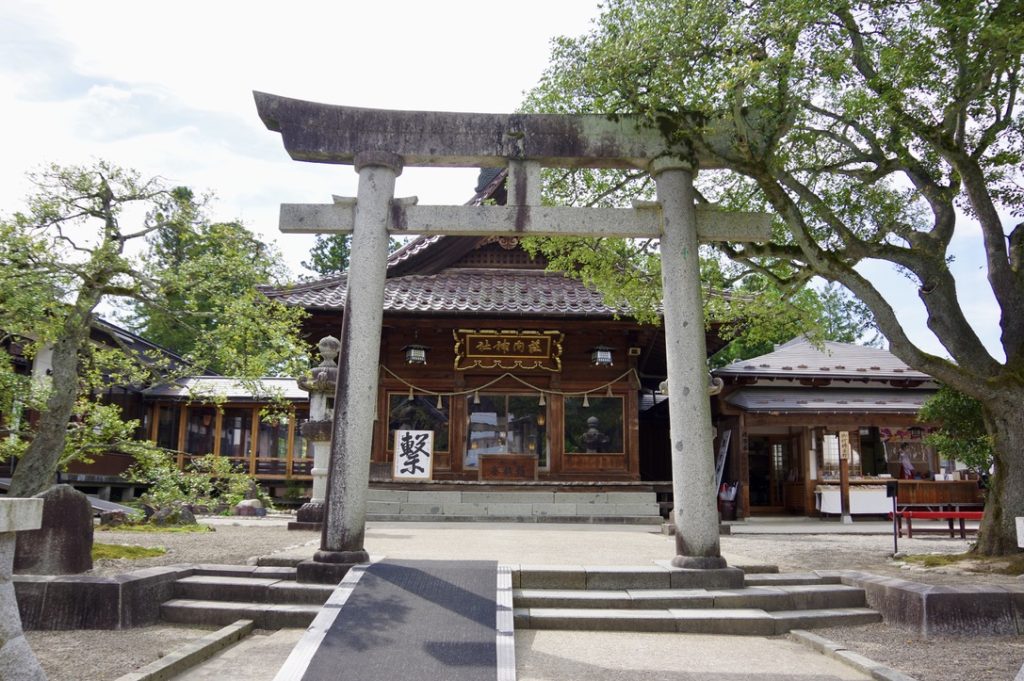
This is the end of our walk!
It’s all in walking distance, so I had a lot of fun even in a short time!
Detailed information

-
Shonai Shrine
4-1 Babacho, Tsuruoka City
0235-22-81000235-22-8100
7. Access
・From Tsuruoka Station
Finally, I will introduce access information to the area around Tsuruoka Park!
It takes about 25 minutes on foot from JR Tsuruoka Station to reach the park.
During the hot summer or cold winter seasons, it may be a bit difficult to make a round trip.
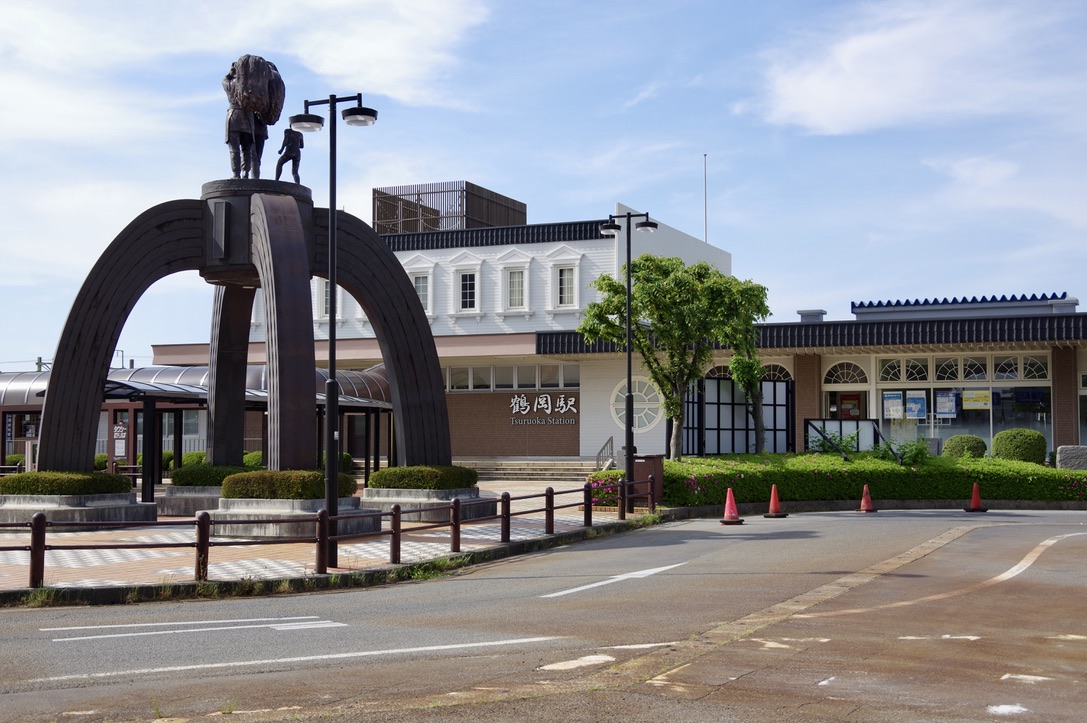
By bus, it takes about 11 minutes from the bus stop in front of Tsuruoka Station.
Get off at the Tsuruoka Shiyakusho-mae bus stop, and Tsuruoka Park is right in front of you.
It can be used on multiple routes, such as the tour bus Tsuruoka City Tour 2 Course.
Another thing I would like to recommend is the free bicycle rental service.
You can rent a bicycle at Tsuruoka Food Culture Market FOODEVER, a complex facility in front of Tsuruoka Station.
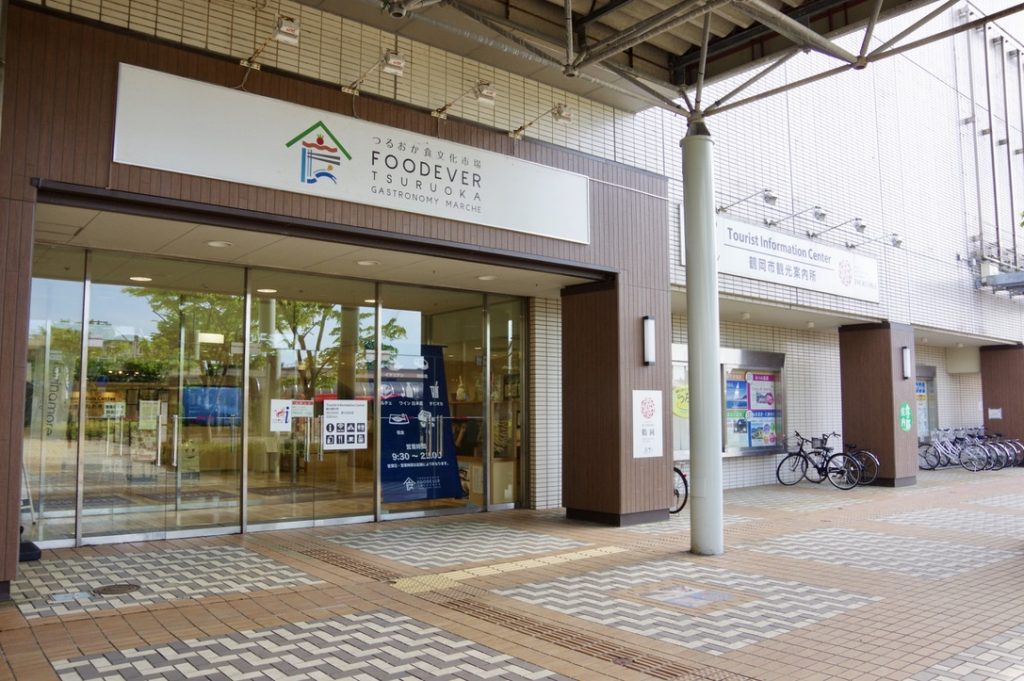
All you have to do is complete the procedure at the tourist information center inside!
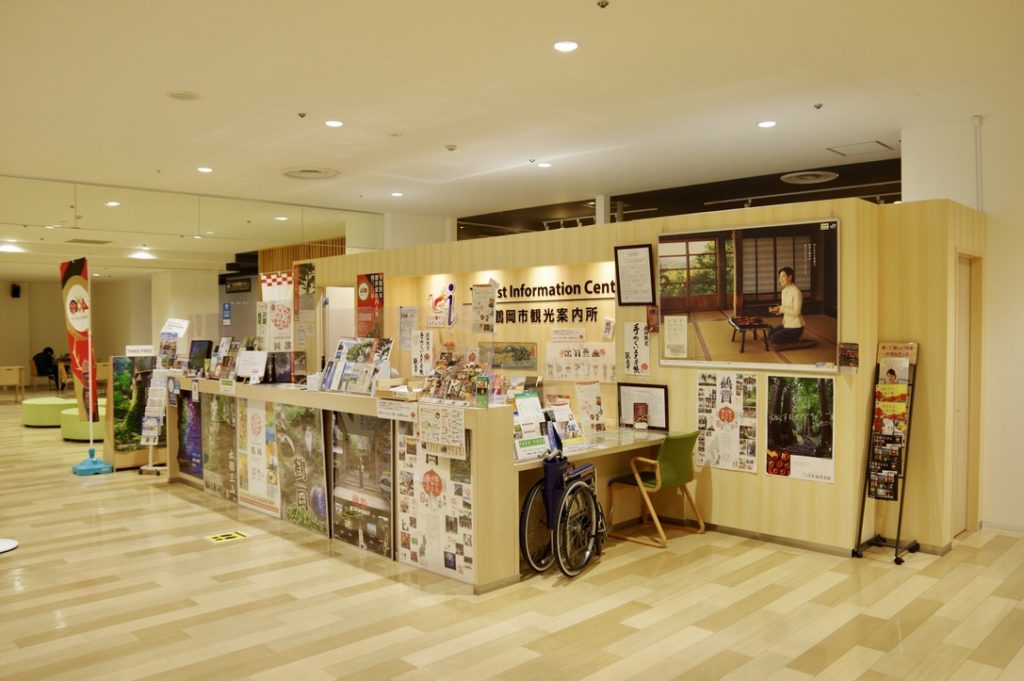
Hours of operation are from 9:00 to 17:00.
The rental bicycles have to be returned on the same day.
It takes about 10 minutes by bicycle to Tsuruoka Park.
It’s just the right distance to easily go around!
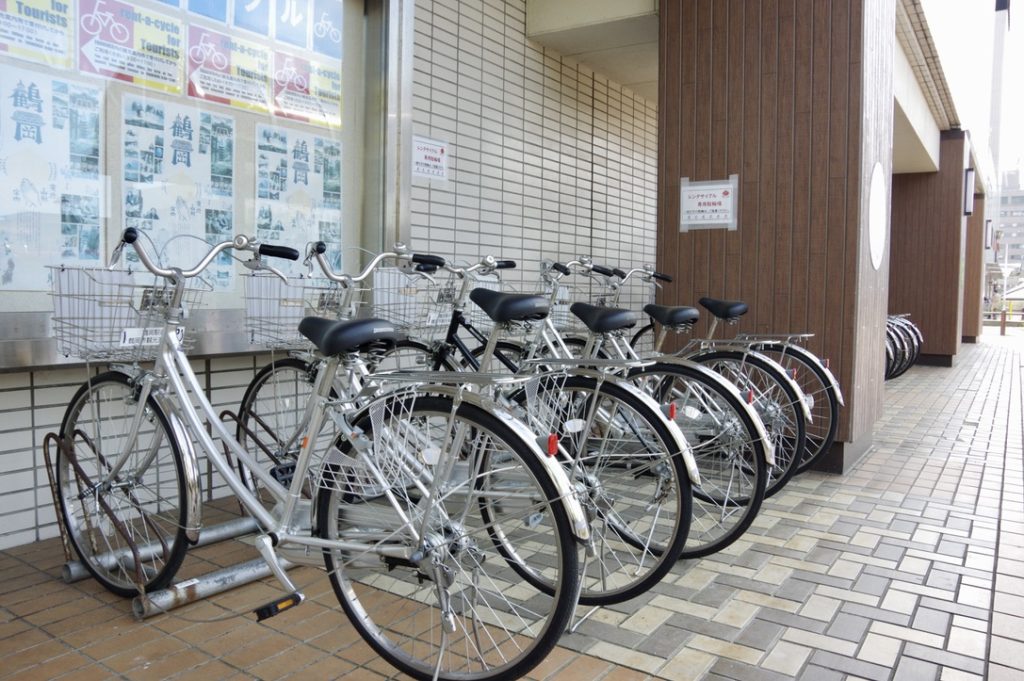
When the weather is nice, how about renting a bicycle for free and enjoying the cityscape around Tsuruoka Park?
・Around Tsuruoka Park
The recommended spots introduced in this article are arranged in a positional relationship as you can see.
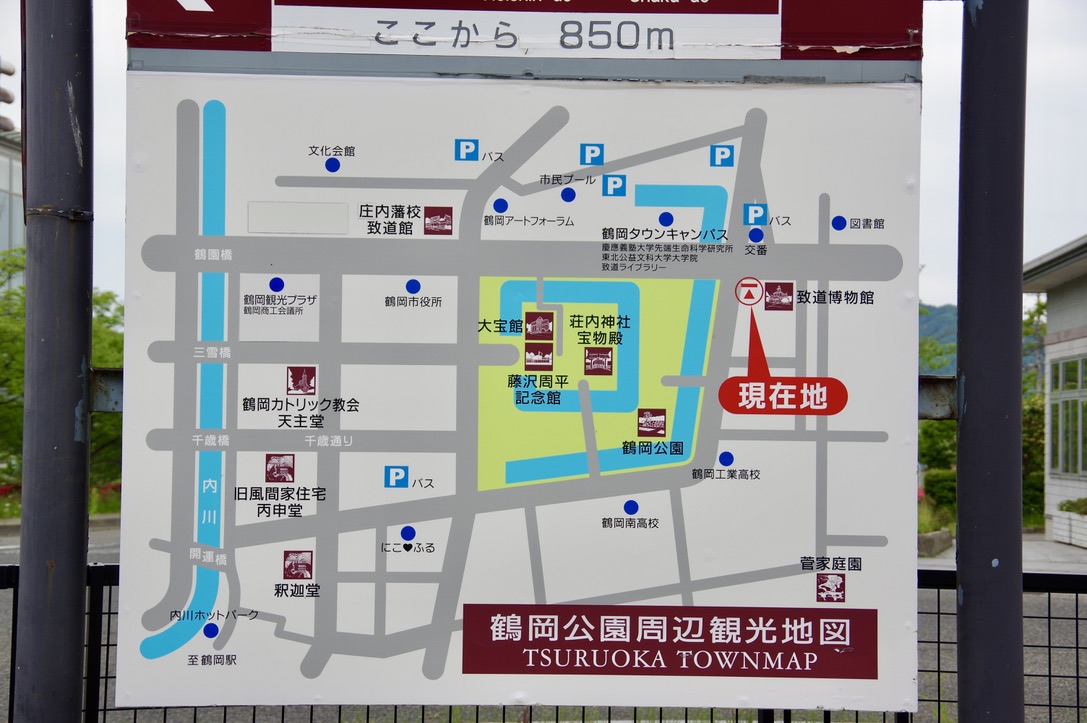
Everything is close enough to walk around easily.
It is a good idea to refer to this information board from the parking lot area of the Chido Museum.
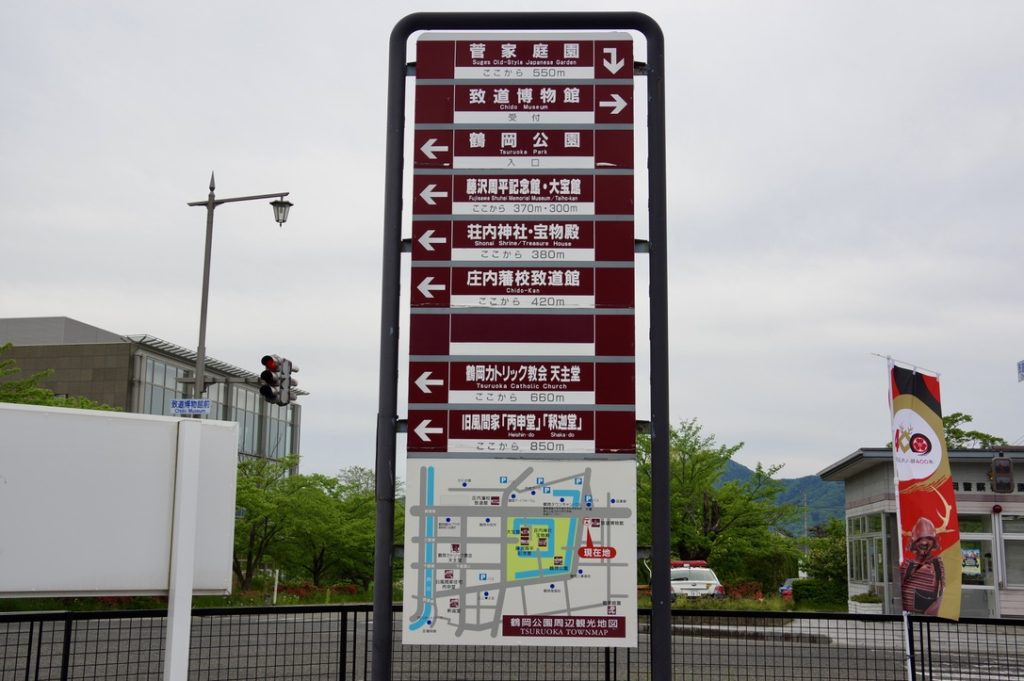
The year 2022 is the 400th anniversary of the Sakai clan arriving in Shonai and as such special exhibitions are being held at each facility.
There are also many food spots around the area that I would like to tell you about again.
Please come and experience the nostalgic streets of Tsuruoka City.

![[Feature] Pino Collina Matsugaoka! Winery & Restaurant in Shonai](https://www.visityamagata.jp/wp/wp-content/uploads/2024/06/pinocollina.jpg)
![[Feature] Sahato Benihana! Enjoy the starry sky at the prefecture’s largest planetarium](https://www.visityamagata.jp/wp/wp-content/uploads/2024/07/sahato.jpg)
![[Summary] Safflower Festival 2024! Discover Yamagata’s prefectural flower](https://www.visityamagata.jp/wp/wp-content/uploads/2021/06/紅花①.jpg)
![[Feature] Miraini! Sakata Activity Hub](https://www.visityamagata.jp/wp/wp-content/uploads/2024/02/compile-image_1707742235039.png)
![[Feature] Yukotto! Refreshing time in hot springs](https://www.visityamagata.jp/wp/wp-content/uploads/2024/03/yukotto.jpg)